|
When a student asks you: "why are all music terms written in Italian?" how do you answer? If you're me, it's a long and involved answer that starts in the Middle Ages, and ends up with a soapbox rant on the election- although it is an intelligent rant. :) Medieval and Renaissance RomeFirst of all, we begin with the Medieval period. Rome has fallen, and there is a bit of a vacuum of power. There are not many historical records that exist from the Medieval period. We know from the writings of Socrates and Plato and others that music did exist prior to the Medieval period- it just wasn't written down. So... pre dark-ages, we know the Roman Empire is the center of the world. Much of our knowledge of this period in time comes from the Bible. The New Testament chronicles the life of Jesus and his apostles, and their fight against Roman domination. Rome is the center of the world, and Jesus sends Peter to Rome to spread Christianity. Peter is considered by the Catholic Church to be the first Pope- he's the one with the key. He was also btw the apostle to be crucified by Nero Caesar upside down. Although the Christians started out being burned or crucified by the Roman officials for violating the state's pagan religion (we all learned some Roman mythology... our planets are all named for Roman Gods and Goddesses), Christianity was recognized as an official religion by Emperor Constantine I in 313. Eventually if you wanted to get ahead socially- you practiced Christianity in the Roman world. This continued until the fall of the Roman empire in 476. Despite the fall of Rome, The Catholic Church survived- primarily because it kept WRITTEN RECORDS! While the majority of the population was illiterate (peasant-type people who worked and didn't have time or the need for reading and writing, or the upper class who didn't bother) the church invested in education- the monks could read and write both Latin and Italian, and educated, and informed missionaries were sent out from Rome to other cities. This information was written down in either Latin (a "holy" language) or Italian (the "secular" language). This included art and music- and from the beginning, the church has always been a great supporter of the arts- just ask Hildegard von Bingen, Michaelangelo, Vivaldi, Palestrina, and DaVinci. So, here is the answer to the original question... Italians came up with the first way to notate music, and used terms familiar to them. Then they taught their method to the next generation of artists and musicians, who continued to use it and passed it to the next generation. Italian terms became standard. One of the interesting off-shoots to that question that I arrive at is this... throughout history there has been a cultural "center of the world"- for over 1000 years, Rome was it. From the building of an enormous empire, to it's fall- through the Medieval period, the Renaissance, and even the Baroque period, Italy has had some incredible artists: just look at my earlier list- add Petrarach, Boccachio, Machiavelli, Dante, Raphael, Botticelli, Alberti, Monteverdi, Gabrielli, Frescobaldi, Galileo... the list is huge. The "center of the world" does in fact shift away from Italy- but not until the end of the Baroque period. Just to be clear... there were other great artists and musicians that were not Italian- John Dowland (English), Guillame Dufay (French), but far and away Italy had the most artists and musicians and innovations during this time period. During the height of Italy's prominence, musicians and artists all over the world would come to study with these great masters and take back home what they had learned- so the Italian terms spread and stuck. The German BaroqueThe Baroque period saw Germany rise and become the cultural center. Martin Luther died (1546) before the Baroque period officially started (1600-1750), but his ideas and battle with the Catholic church took hold and continued for hundreds of years. Luther believed strongly that music was an important part of religious ceremony, and that it should be done in a language that people could understand. Luther was himself a prolific hymn writer, the most famous being "A Mighty Fortress is Our God" or in German "Ein' Feste Burg". Not only was he creating music using the common language, but he was also using common, familiar songs with new words, allowing everyone the opportunity to participate in music making- an innovation at the time. Now, suddenly great composers begin cropping up in Germany- Michael Praetorius, Heinrich Schultz, Johann Pachelbel, George Frederick Handel (who was born and raised in Germany. He didn't moved to England until he was 25 years old), and Johann Sebastian Bach. From these great German composers, we've gotten new genres (the oratorio, the toccata, sonatas, concertos), saw a rise in secular music, and new theoretical concepts- well tempered tuning instead of equal temperament, and a rise of a prominent melody with supportive harmonies as opposed to polyphony. Classicism in AustriaAs we shift into the classical period, we see Austria come into prominence- which is not surprising as Austria borders Germany. It makes sense that musicians from Austria would travel to study with these great German composers, and that German composers might seek gainful employment in nearby Austria. Austria's Emperor Leopold I was extremely supportive of music and musicians. Leopold was himself a composer and showered patronage on several preeminent musicians of the day (none who are familiar to this age). His son, Joseph II followed his lead and continued to support musicians. At this time period, we see the rise of the first Viennese school of music, which included the three famous composers: Franz Joseph Haydn (Austrian), Wolfgang Amadeus Mozart (Austrian), and Ludwig van Beethoven (German). The biggest innovations during the classical period were not necessarily musical in nature- they were more social changes. The rise of the middle and merchant class meant that composers began composing music for a wider range of patrons- not just the church or the state, but for the common man to enjoy as well. Just to put it in perspective, this period saw both the American and French Revolutions. The people began to revolt against monarchs, and we see the rise of modern democracy in its various forms (ancient Greece was a democracy- it's not really a new idea). We can see the change in social order play out in the careers of Haydn, Mozart, and Beethoven. The oldest, Haydn (1732-1809) worked well within the patronage system. Haydn was employed by Prince Nikolaus as Kapellmeister for the wealthy Esterhazy family. While he did have to wear livery and follow the family, they gave him freedom in the ability to publish and sell his own music, while still providing him with a home, food, and clothing. Mozart (1756-1791) did not fare so well with the patronage system. He disliked being employed by the Salzburg court- Prince Archbishop Hieronymus Colloredo paid a low salary, and there was not a whole lot of opportunity for the large operatic works he wanted to do in Salzburg. He chose to leave and seek his fortunes elsewhere, and he ended up in Vienna as a freelance composer and performer. The uber supportive Emperor Joseph did give him a part-time position as "chamber composer"- a post that had remained vacant since the passing of Gluck, but it was not a lot of money, and as we all know, Mozart died extremely young, and extremely poor. Beethoven (1770-1827), however appeared to be successful as a freelance musician. He did have several prominent patrons including Prince Lobkowitz, Prince Lichnowsky, Count Andreas Razumousky, and Archduke Rudolph (the son of Emperor Leopold II), he mainly supported himself by selling composition rights, and through public performances. French RomanticismAlthough rooted in the German Sturm and Drang (storm and stress) movement, the French Revolution was of great importance to the Romantic period. So much so that by the end of the Romantic period, Paris is THE place to be for composers and musicians. The list of French Romantic composers is long and distinguished: Adolphe Adam, Hector Berlioz, Charles Gounod, Jacques Offenbach, Cesar Franck, Camille Saint-Saens, Leo Delibes, Georges Bizet, Jules Massanet, Charles-Marie Widor, Gabriel Faure, Henri Duparc, Claude Debussy, Paul Dukas, Erik Satie, and Maurice Ravel. There are also two famous French music teachers around the turn of the century: Vincent D'Indy, and Nadia Boulanger. France was poised to become the center of the musical world until... WAR. World War I and World War II both devastated France (and much of Europe) American History- and it's rise to modern prominenceAs most of Europe collapsed into huge wars at the beginning of the twentieth century, the United States opened it's borders to refugees. But wait... let's back up and look at American history briefly. As we all know from the well-known rhyme, Columbus sailed the ocean blue in 1492. About a hundred years later, people began coming to start new lives. The lost colony of Roanoke was founded in 1585, Jamestown in 1606, the pilgrims landed in Plymouth Rock in 1620. The first slaves were taken from Africa and arrived in Jamestown in 1619- just 13 years after it was founded. Just to put it in perspective- slavery and Africa were part of our nations history FROM THE BEGINNING- something we as Americans should never forget. Another thing we shouldn't forget is that music is universal- all cultures throughout the world have a musical tradition. As early as the ancient Greeks, extending to Asia, India, and Africa- not just the west. When we brought Africans to America, they came with their history and traditions which are just as deeply rooted in American customs as the European culture is. From the field hollers and work songs of the African American slaves, European Americans were exposed to blue notes, syncopation, and improvisation. The call and response format grew into spirituals, syncopation was the starting point for ragtime. By the middle of the 1800s (after being enslaved for over 200 years), the African American music became so popular that white musicians began putting on black face paint and playing African American music. In 1848, blackface minstrels were considered a national art form. This went on for over a hundred years- ending with the Civil Rights movement in the 1960s. The American Civil War began in 1861 and ended in 1865. By 1865, African Americans had been enslaved for 246 years. Think about that number for a second. 246 years of slavery- with the human generation span being about 25, that's 10 generations! They've only been free for 152 years (6 generations). And if you also take into account the freedoms that were not granted- the ability to vote (not granted until 1965), inequality in schools (segregated and underfunded until Brown v. Board of Education in 1954- the south resisted until 1968), equal wages... this list goes on. We have come a long way since 1865, but there are so many wrongs over such a long period of time. We are all products of the generation before us- our parents are our first teachers. If the previous generation has been undereducated and oppressed, of course that anger and distrust will be passed to the next generation. My parents were alive and in their 20s during the 1960s. While African Americans struggled to receive equal opportunity in our public school system, they received a good education, both went to college, worked well paying and fulfilling jobs, and in general lived a good life. I'm not saying that they don't deserve everything they have- they have worked hard, but I am fortunate enough to be the result of white privelige. My parents provided us with a nice big house, good food, made sure we went to school, helped us with homework- or facilitated help. They provided us the opportunity to go to college. They worked hard their whole lives, and I'm not saying that they don't deserve everything they have because they do, but still they had advantages others didn't, and as a result, I have also been given advantages. I've never owned slaves, my parents never owned slaves, my grandparents never owned slaves, but white privilege is real. We need to own that truth. So, getting off my soapbox and back to my point... the United States was the combination of both European and African cultures to create a new world- and that can be so easily seen in our music. Begin with the idea that black music was so popular that white people tried to imitate it, we see Scott Joplin's rags get written down in proper Italian notation so us white people can play it too. From Louis Moreau Gottschalk imitating the sounds of the African instruments in his "grotesque fantasy" The Banjo in 1853 to the popularity of jazz and swing music in the 1920s, the premier of Gershwin's Rhapsody in Blue in Aeolian Hall in 1924, to Rock and Roll (black music) becoming popular in the 1950s (Elvis was singing the blues). The combination of African rhythms, instruments, and sounds with the European notation, format, and precision to create a unique sound that is popular and recognizable worldwide. As a matter of fact, today, the U.S. Media and Entertainment Industry is the largest in the world. The US produces 1/3 of all media and entertainment worldwide. It is our second largest export (following agriculture). It is an industry valued at $632 billion in 2015 and expected to reach $771 billion by 2019. You don't have to take my word for it- feel free to read the federal government's market assessment: 2016 Top Markets Report: Media and Entertainment. You can find it at: http://trade.gov/topmarkets/pdf/Media_and_Entertainment_Top_Markets_Report.pdf. It seems crazy to me that our new President wants to cut funding to the arts and arts education, when our artists are bringing so much money into the country, but that is another post... So, to get back to world history at the beginning of the twentieth century... Europe collapsed into huge world wars both in 1914 and 1939. Separated from Europe by the Atlantic Ocean, the United States- while assisting our allies, was more or less safe (Pearl Harbor happened, but it was not the rule). As a result, refugees poured into the US during this time. Bela Bartok, the Hungarian composer was offered a position at Columbia University when he fled in 1940. He was quoted as saying: "My main idea, which dominates me entirely, is the brotherhood of man over and above all conflicts ... This is why I am open to influence by any fresh and healthy outside sources, be they Slovak, Romanian, Arabic or other". Marlene Dietrich came to Hollywood originally just to work, but when Nazis took over Germany, she refused to leave and was granted American citizenship in 1939. She spent her time working for the USO, and helped out in army hospitals. Germany declared her a traitor and sent her sister to a concentration camp. The Austrian composer Arnold Schoenberg was labeled a degenerate by the Nazi party because he was a Jew. He came to the US in 1934 where he taught in two universities in California. Both have named their music buildings after him. Russian born Igor Stravinsky came to the United States from France in 1939. He became a naturalized citizen in 1945. Stravinsky has a star on the Hollywood Walk of Fame, and was posthumously awarded a Lifetime Achievement Grammy. Immigrants weren't just Europeans either- musician and TV star Desi Arnaz came to the US during the Cuban Revolution in 1933. Arnaz was a pioneer of American television creating the multi camera setup we still use today. He is the reason that America saw their first pregnant woman on television. His (and Lucille Ball's) studio DesiLu is responsible for creating some of the most memorable television shows we saw: the Dick Van Dyke Show, The Andy Griffith Show, and the original Star Trek in addition to the beloved I Love Lucy. Great American immigrants are not just are not just musicians. Let's not forget former Secretary of State Madeline Albright. A Czechoslovakian refugee, she came to the US with her family in 1948 (fleeing from Communism). She was 11 years old at the time. Born a German Jew, Albert Einstein fled Nazi Germany in 1932 when he accepted a job at Princeton. He was also deemed a traitor by Germany, and many of his books were thrown into Hitler bonfires. Einstein worked hard to help other Jewish refugees- making visa applications, and vouching for acquaintances. He helped to support the war effort by auctioning off his 1905 paper on spatial relativity. It brought in $6 million and is now in the Library of Congress. Another former Secretary of State was also a German Jew. Henry Kissinger's family fled Germany in 1938. He attended American high schools, American colleges, and served in the American military. Because of the unique cultural foundation of the United States- a combination of African and European traditions, AND our open doors at times of war, the US replaced France as the cultural center of the world in the twentieth century. America is great because of the inclusion of many different races, and ideas. America is great because we have welcomed those who need a safe haven. As we move forward into the Donald Trump years, I hope and pray that we do not lose sight of what has made America great in the past, and still continues to make us great at present: inclusion. We are the UNITED States, a people come together from all nations, and backgrounds to create a better life. Diversity means cultivating new ideas, and innovations, then educating the next generation. It is why musical terms are written in Italian- because Italians figured out how to write music down first, then taught the next generation of students how to read and understand their notation. As Americans, we've inherited an amazing diversity of people and ideas that created the American Dream. We need to continue to see that people of all colors and backgrounds have the opportunities they had in the past. That is what makes America great, past, present, and hopefully future.
0 Comments
My husband has been working on this beautiful mural in the waiting room of the studio. Using my initials (Amy Riffle-Kouyeas) as inspiration, we named the studio The ARK, and Tom has been working on creating a beautiful ARK mural complete with whales, fish, and our family in our little canoe. He's planning on adding a hot air balloon, and an octopus at least- it'll probably forever be a work in progress. :) Anyway... this mural is completely unique, and a beautiful central focus to the studio, so I started thinking... how can I use this to teach? I've been looking for new ways to encourage and implement flash cards in the studio, so I started there. As I build this new studio, I am realizing that each one is unique- and given enough time, each one will evolve. Although I stay the same, the students are all different, with different relationships to one another, and different backgrounds. In this particular group, I am finding that these students struggle a little bit with speed. They are very careful and check and double check that their answers are correct before they are willing to say them, or play them, so when starting a new piece, I am always a little frustrated by what I perceive as a lack of knowledge of notes. Because these kids are progressing at a good rate, I know that they are diligently practicing every week- which is great. What I'd like to do is to find a fun way to encourage them to be more confident with their note reading, so I sat down with my set of flash cards and divided them up into 7 levels. Level 1I typically use the Bastien piano method. I know it's totally old-fashioned and most modern teachers are using Faber and Faber these days. I do like the Faber and Faber supplemental material (the Classical, Hymn, Popular, etc. books are graded and make great recital pieces), but having taught out of several different method books (Bastien, Faber and Faber, Alfred, and Thompson), I still prefer Bastien. For me, it moves at a faster pace, has fewer levels, and moves nicely into the Bastien Piano Literature books- which are genuine literature. Anyway... Level 1 flash cards get students to about the middle of the Primer level- they know the C position notes, quarter time signature, basic dynamics (actually only forte and piano, but come on, if you have 1 f and it means loud, what do you think 2 fs mean?). They've also gotten slurs, ties, and repeat signs as well as intervals 2-5. Level 2Level 2 is the middle of the Primer level. It builds on Level 1, and adds notes for middle C position, and the right hand A, the rests that correspond to the notes they already know, plus eighth notes. Sharps are also introduced, and I added mezzo forte and mezzo piano, because again, come on- it's common sense. Level 3Level 3 finishes out the Primer book adding G position notes, plus staccato and flat. I added the accent- which isn't introduced until Level 1, but it's really early in Level 1 and the totally new stuff doesn't come until the middle of the book, so this was just a better fit here. Level 4Level 4 is the first half of the Level 1 book (somewhat confusing...). It includes the tempo marks and C, F, and G key signatures. My kids should already know their key signatures at this point from their scale work, but this is where Bastien teaches the early key signatures. Random aside- I begin teaching scales and arpeggios as soon as my kids learn how to read C position notes. At that point, they understand their finger numbers, and the white key names, so I just jump in- I deviate from every method book in that way, but I've always had success introducing scales early. It helps my kids understand basic theory, and improves their technique. Level 5Level 5 finishes out the Level 1 book. It includes the left hand higher G position notes- plus the octave G in the right hand, the start of syncopation- the dotted quarter eighth rhythm, dynamic shading, tempo changes, the natural sign, the octave sign, DC al Fine, and the pedal sign. All this before the end of book 1... I do like the pace of Bastien. Level 6Not a lot to add by Level 6- intervals 6 and 7, D major key signature, and fermatas. This is introduced in Book 2. Level 7Level 7 is anything left that is introduced in Books 3 and 4. These include leger line notes, the octave interval, and B-flat major. I'd like to eventually add more key signatures and move beyond 2 accidentals, but they weren't included in this set. Maybe I'll have to make my own or see if Alfred has a second level of flashcards. On to the game...So, now there are various levels for students to achieve, with built in guideposts which correspond to their books. At the winter recital, each student was given a set of flashcards as a Thank You/Holiday gift. For their first lesson back, they'll receive handouts of the cards for each levels. Their first task will be finding and identifying the cards they need to know for Level 1. For the yellow, pink, and blue flashcards, students need to be able to give the correct answer in 5 seconds in order to choose their animal and place it on the wall. I have white board foam core which will be cut in animal shapes, and then the students can decorate and add their names. So, they achieve their first level at 5 seconds, then we work to achieve 3 seconds, and once they can give the correct answer in 1 second, Level 2 flashcards will be added. The animal moves to the next wall once they can identify Level 2 cards in 5 seconds. Then they try for 3 seconds, then 1 second, then Level 3 is added. Once they can identify Level 3 cards in 5 seconds, they move to the next wall, and carry on. Because of the way the bathroom juts out into the studio, the animals will begin on the wall with the door, travel around the three outer bathroom walls, and then turn the next two corners (walls 5 and 6). Wall number 7 is the wall with the mural. Once their animal has reached the seventh wall, their animal has reached the Ark and can be placed in the water, sky, or boat- depending on what their animal is- and becomes part of the mural. I might add small prizes once they achieve the 3 second mark- jumping from 5 seconds to 1 seemed extreme, but identifying notes in 1 second is possible, so that's what I'm shooting for! This is my first semester trying this out, but I'll try to post updates and share how it goes! Thank you for reading! Now, go practice with your flashcards!One of the first questions I am asked by parents registering their kids for piano lessons is- "do we need a piano to start out?". My answer is always "yes". Yes, you will need a piano for piano lessons to be worth paying for. Yes, you can start out and get by for a couple of weeks while you look for a piano, but by the end of the first month, if you don't have a piano, lessons are a waste of time and money. Having spent many years teaching in rural Appalachia, one of the biggest concerns about getting a piano is cost- so my answer is always (and still is)- check Craigslist, check your local freecycle page (I don't care where you are- there's one on Facebook), check your local classifieds, and call your local church. There is a free piano somewhere- someone is ALWAYS getting rid of a piano. A decent piano will last forever. When Grandma passes away, and the kids don't play anymore, families everywhere are looking to unload old pianos- they're heavy and take up a lot of space. Oftentimes they're donated to churches (trust me, I've accepted many a donated piano- and passed it along to students who needed one), I'm sure sometimes they end up in a landfill. Finding a free piano can be difficult, but rewarding because you are 1. Helping out a neighbor by taking this big awkward piece of furniture they no longer want and 2. Continuing to use an instrument that has years of use left and keeping it out of a landfill. Again- decent piano will outlive me. Case in point- this lovely Wurlitzer console piano. I found it for free on Craigslist. Here's the story: an older woman had just lost her husband. She was putting her house on the market and was preparing to move somewhere smaller and more manageable. Her kids took lessons on it, but no one plays anymore, and she just needed to get rid of it. The tuning records marked on it show that the last tuning was in 1967- but it was in pretty good shape. The worst part was the chipped and yellowed keys on the keyboard- and that is fixable. And at under $50- a relatively cheap fix. But be prepared to spend some time on it. First of all- you will need to order new key tops. I found these on eBay for $14.99 plus $1.99 in shipping. New 52 Pcs White ABS Plastic Piano Keytops Kit with Fronts Replacement Key TopsDepending on your tool inventory, the other thing you'll need to purchase is PVC-E glue- at least that is what the Piano Technicians Guild recommends. I could not find it without special ordering it, so I went to my local hardware store (shout out to McDaniel's Do-It Center in Snohomish- I love that place!) and asked about it. They recommended E6000 Industrial Strength Adhesive. It was less then $5 and has been working great. Make sure you have plenty of ventilation though- the vapor warning is NO JOKE! In order to do this job, you will need: 1. A fairly large flat-head screwdriver. I use 2 other screwdrivers to prop open the top as well, but you can use anything you've got as a prop for the piano top. 2. A chisel for removing the old key top. 3. Sandpaper for cleaning/sanding the glue and debris off the key. 4. A knife for separating the new key tops. I just used a regular old kitchen knife 5. A rag for wiping away excess glue 6. A metal file. The Piano Technician's Guild recommends grinding off one of the edges- I didn't do that. Just be careful that you don't file where you shouldn't. 7. A grinder. The excess plastic will need to be removed- the key top must conform to the key perfectly. You could spend the time filing it with the metal file, but I found that entirely too time consuming. Besides, it's sort of fun to use the grinder. :) Once you have your tools and supplies in order, it is time to begin opening up the piano. Each piano is a little different, so take the time to look at how it is put together. For this Wurlitzer, I started by removing the front rail that is in front of and below the keys. It's held in place by 5 screws underneath the piano. Next, lift the top. I use two screwdrivers on either side to keep it open. Next, remove the fall board (also known as the key cover). It's the part that either falls, or folds to cover the keys. On this instrument, it's attached to a metal brace held by two screws. Lastly, remove the wooden brace that the fall board was attached to by removing the two screws on either end. Now the piano is completely open! First of all, observe that the keys are all individually numbered. THIS IS VERY IMPORTANT! Each key fits in a very specific location- one D cannot be replaced with another D just because it's the same shape. They must go back in the same order. If you do not see numbers on each key, number them as you pull them out. The picture below shows the numbers from 69-86. Now, the key is attached to a part called the whippen and a rail by a small screw. Remove the screw, carefully fold back the whippen to behind the rail, and lift out the key to work on. I've been working on an octave at a time. Here is what the key will look like once you're removed it: Once you have the keys removed, you will need to use the chisel to remove the old key top. As best as you can, keep the wood of the key below the key top from splintering- you'll want a clean, solid surface to glue the new key top to. I started with the chisel from the back end of the key- the narrowest part, and slid the chisel forward to the widest part. The top typically popped right off, and then I removed the front of the key top- also using the chisel. Next, sand off all the glue and smooth out any other unevenness in the key. Once the keys are prepped for the new key tops, you'll have to get the new set ready. I found breaking up the new set difficult- I broke several keys in the beginning and did end up needing to buy a new set to complete the job. The new key tops will come in several sets of octaves which will need to be broken up into each individual key. What I found that worked for me was to use a knife to separate the front of the key tops, then snapped the the key tops apart by hand while still keeping them joined by the protective coating. So, within the octave, select the correct key top to replace (use a D for a D), remove it from the new set, and use your glue to glue it to the key. Wipe away any excess and allow the glue to set. According to the glue I used, it needed a 15 minute set period. Once your glue has set, you can look at your key and see that the key top does NOT fit the key perfectly AT ALL. There will be significant overhang- plus the pick points of the plastic will be clearly visible. Here is where you get to use the grinder to grind off all the excess plastic. If you remember looking at the original key, you'll recall that the plastic fit the wood perfectly. This is your goal to shave off all the excess until the new key top is a perfect fit. Make sure you get all sides- 3 sides on the front, 2-4 sides on the top (depending on the notches), plus the the notch. On the bench grinder I used, there are 6 possible sides to use on the two rotating wheels- the front of each, plus 2 sides. The keys all bend in different directions, so use the wheel, and the side that works best for you- there are many options. What I also found worked best was being aware of the angle the key was being held- you don't want to tilt the key top toward the grinder- you want the key and the key top to be the same, so keep the key flush to the grinder- even though you don't want to grind the wood. Perhaps a video would've been better. :) Once you've finished grinding off the excess plastic, you'll need to file off all the bumps and inconsistencies with a metal file by hand. Again, make sure you're getting all sides of the key- once you've replaced the keys, sit down and play a bit and see where the sharp spots are and then go back and re-file them. At least I had to re-file a bunch- which is why I keep going on about the many sides of the keys! Now you're ready to put the key(s) back in the piano. First of all, I like to vacuum out the hole where the octave that I'm replacing was. There was a ton of dust and dirt in the hole- which is not surprising considering the age of the piano, and the amount of felt inside, which does tend to attract dust. Then, you'll want to put the key in. The key will need to make contact in three different spots- There is a pin in the front which fits in the hole in the front under the key top. There is a pin that fits all the way through a red felted hole in the center of the key. Then there is the capstan screw- which is the screw that sticks up on the back of the key. There is a leather pice of the whippen which fits on top of the capstan screw. Feed the whippen back underneath the wooden rail, making sure the leather and capstan screw are fit together correctly. Then screw the whippen back into place. Whenever you're done, it's time to put the piano back together. Reattach the brace holding the fall board. Reattach the fall board, lower the top, and reattach the front rail. Congratulations! Your piano now has nice, new white keys!
The Learning EnvironmentAssuming that all four types of learners will always be present in a classroom, a teacher should create the following types of classroom space in order to accommodate them: (adapted titles to match with Allie's Teaching Portfolio picture) 1. Quiet space for individual assignments (Writing Center)- a place where Bears can do workbooks and worksheets or Owls can research individual projects. 2. Small group space (Group/Individual Work Area)- important for Dolphins. Students can get together in small groups to discuss assignments or do problem-solving tasks together. Create space for four to six students that include curriculum materials for all learning types at all levels. 3. Large group space (Circle Area/Reading Center)- a place where students can meet for presentations, discussions, or demonstrations. Apes and Dolphins like to role play, and do dramatizations and presentations. This is a place for the teacher to lecture, or start a discussion, or a place where all students can show off individual projects. 4. A project center (Pretend Play Center)- designed for arts and crafts and science experiments. A place where Dolphins can create art, where Owls can do science experiments, and where Apes can do hands-on experiments. 5. A media center (Technology Center)- for all learners. Include a projector, BlueRay player, television, computer, CD player, MP3 player, video camera, and whatever else can be included. Run all these tools into a listening post with headphones to keep the noise down. Bears can view educational videos and material, Dolphins can create their own films, Owls can create slide shows, and Apes can practice upcoming presentations. 6. A game center (Pretend Play Center)- can appeal to Apes' need for fun, excitement, challenge and contest. Separate from study areas to reduce noise. By using this multi-sectional classroom arrangement, the teacher becomes a classroom manager, rather than the sole source of information. This frees the teacher to develop a productive relationship with each student, where she guides him in his social, personal, and intellectual development. As a teacher carries out this role of classroom manager, she will have four different opportunities to become aware of the actions and progress of each student; as auditor, monitor, assessor, and instructor. The Teacher's RolesAs auditor, the teacher receives verbal and written reports from students, which show what students are working on, and how they are doing with projects. After the teacher has been given this information, she should set up progress reports so that all students know where they stand. In addition to learning about students' progress, the teacher can also guide students in selecting topics, developing plans and finding resource material. As monitor, the teacher needs to circulate around the room and see first-hand what each student is doing. This allows the students to show the teacher any work in progress. This also gives the teacher the opportunity to give encouragement and support. As assessor, the teacher evaluates students' performance. It is important that all students know the results of their assessment, and how much they have improved. By posting current and previous results for each student, everybody can see how they rate with each other, and how much they have improved. Seeing the progress of each student as well as the progress of the whole class allows the teacher to determine whether all learning types are progressing. In this way, teachers can find deficiencies in their teaching style. As instructor, it is up to the teacher to design and implement an effective instructional program. By understanding the characteristics of each learning type, a teacher should be able to create an instructional program that will inspire each student. Teaching StrategiesThe teacher/student relationship is important in facilitating learning. The teacher must be seen as benevolent, and as someone who cares about each individual student's welfare. If the students see the teacher as a friend, they will be more cooperative and work harder for success. Constructive criticism is acceptable but should be kept positive. Be sure to show students what can be done to improve, and encourage them to do so. It is important for teachers to balance freedom with restraint. Ape students want freedom, but can become hyperactive and disruptive with total freedom. Allow short periods of free work time, balanced with equal periods of quiet activities. Bear students need the structure; however, too many restrictions will disrupt their feeling and need of social belonging. Owls will become impatient and disrespectful toward teachers who impose unwarranted or unnecessary rules. Lastly, Dolphin students will withdraw from a restrictive environment. All students need feedback. Apes like feedback on performance. They need to know that they have had an impact on others, and that their performance was enjoyed. Good grades, or praise for completing a task will not be motivating. Rather, after Apes acquire the knowledge necessary to present, demonstrate or perform, they then want appreciation for the performance. Bears want praise for products. Good grades, gold stars, awards, trophies, ribbons and badges are very important for Bears. They also like recognition for being loyal, industrious and responsible. Owl students like feedback on the quality of their achievement based on its coherence and efficiency. They need encouragement, assurance of capabilities, and direction on how to improve. Report cards can have a negative effect on Owls; once high grades are achieved, they must always be achieved. Dolphins want personalized acknowledgement. Personal notes on papers act as a powerful motivator. By giving status role assignments, teachers can motivate students. Classroom artisan (draw pictures for teacher), entertainer, official clown, master of ceremonies (leader of performances), demonstrator, or projectionist are roles that would inspire Apes. Bears are the type to enjoy being classroom treasurer, librarian, historian, janitor or caretaker- roles which require being responsible and giving service. As classroom philosopher, designer, inventor, scientist or president, Owls could be given the opportunity to do independent research. As a science or math consultant, Owls could help other students understand concepts. Dolphins would enjoy roles such as co-teacher, or tutor of younger students, classroom counselor, host receptionist, official correspondent, journalist, author or poet. They like roles that help them to bring out the best in others. Teachers should understand and be able to value the differences that each learning type can bring to the classroom. Apes bring fun and laughter. They help solve immediate problems. In addition, Apes are open-minded, adaptable, patient and non-judgmental. Bears bring the concept of social responsibility to the classroom. Owls are enthusiastic about learning, and this often rubs off on other students. They also add efficiency and effectiveness to the classroom. Dolphins add warmth and caring to the general atmosphere. They work to create freedom, autonomy and equality among individuals. ConclusionWhen assessing a student's personality and learning characteristics, the teacher should remember that every single individual is different. By associating the four different learning styles to students, the teacher can get a better, quicker grasp of what each student can contribute to a particular learning environment, and what each student will probably draw from the same environment. Each student has specific strengths and weaknesses. By teaching in an environment that accommodates each learning style, a teacher can promote learning within every student.
IntroductionKeith Golay, the noted educational psychologist, emphasizes the fact that every person is different. Everybody has a unique genetic wiring which determines intelligence, learning patterns, physical constitution and temperament. Unfortunately, when a teacher has to deal with different temperament types in a complex environment such as a classroom, it is very easy for incompatibilities to occur between the students, the instructional programs, and the utilization of classroom space (Learning, 2). In an effort to reduce this mismatch, teachers should do the following: 1. Discover the personal characteristics of each student. 2. Consider what educational environment has the most direct effect on the behavior of students. 3. Understand which factors of the environment are most compatible with each learner's characteristics. 4. Have a plan for arranging the classroom to accommodate a variety of students, methods and materials (Golay, Learning, 2). Typology is the belief that all people display a style of life which predisposes them to certain ways of thinking, wanting and emoting, and which gives rise to constancies in behavior. By knowing a student's personality, a teacher can predict his reaction most of the time. Keirseian Temperament Theory is a typology that views the personality as unified. All the imagined parts of a person's temperament work together to create a unified personality. Golay quoted David Keirsey as saying "Temperament is primary; abilities, preferences, emotions and actions are secondary. One's temperament predisposes him to certain ways of thinking, understanding, or conceptualizing, and to having certain wants, motives or values. And since patterns of emoting and acting are governed by thoughts and motives, they follow suit" (Learning, 12). Keirsey defines four different personality types, and Golay relates four different learning styles to Keirsey's personality types. These eight different categories are referred to by many different names: Dionysian and Artisan, Epimethean and Guardian, Promethean and Rational, Apollonian and Idealist are the different names for these personality types. In his first book, Learning Patterns and Temperament Styles, Golay refers to the learning patterns in scientific terms: Actual Spontaneous Learners, Actual Routine Learners, Conceptual Specific Learners, and Conceptual Global Learners. In Introducing the Animal Kingdom, it's a Jungle Out There, he relates these learning styles to similar type animals: Ape, Bear, Owl and Dolphin. Throughout this paper (or blog 12 years later), the terms Artisan, Guardian, Rational, and Idealist will be used in reference to the personality types: Ape, Bear, Owl, and Dolphin will be used to designate learning styles. Personality Profiles and Learning StylesArtisan Apes. Artisan-type people want freedom. Robert Frost, the artisan poet once said: "To be pressed into service is to be pressed out of shape." (Qtd. in Golay, Learning, 13). Very active people won't work well when forced into a position which restricts their actions. Artisans are impulsive and live for each moment without ever considering the past (it's gone) or the future (it's intangible). As a result, they make only few, short-term tentative goals. Artisans act swiftly and with great precision. They can seize the moment and are not afraid to take risks since they respond well in a crisis. Artisans live in a physical world; they like tools and working in a hands-on environment. They are frequently described as exciting, unpredictable, generous, and fun-loving. Using Kiersey's Artisan temperament types Golay defined how an individual with this personality learns most effectively; he described such individuals as Apes in his presentation Introducing the Animal Kingdom- it's a Jungle Out There (40). Ape learners are not abstract learners. They learn by doing, and only learn what is needed to take some form of action. Given the right incentive, Ape students do what is necessary to achieve their goals. Apes dislike restriction and want to be free to move about; they can be "behavior" problems. Teachers should create lessons giving Ape students equal time doing "boring" school work (math problems, reading) and fun, educational "hands-on" projects (building a volcano for a science class, or creating a collage for a book report). This can provide variety and stimulation. These types of learners won't respond well to the typical lecture format. An instructor should plan dynamic presentations which include audio-visual aids. She should also keep it short, since these learners lose interest quickly. A discussion approach would also be effective if kept fast-paced. Action is the key to motivating these students; they want hands-on experience. Once an activity captures the interest of these students, they will do it for hours on end. If Ape learners become interested in playing the piano, they will practice often and for long periods of time; they can easily become outstanding performers. Highly structured assignments that require planning will most likely not ever be done, or will be thrown together quickly by this type of student. They are cheerful, fun and energetic. Ape students respond well to fun educational games and dramatizations or role playing; they like competition and being the center of attention. Approximately thirty-eight percent of students in a class size of thirty-two will be Apes (Golay, Learning, 32) In the piano studio, Ape students will not want to sit still, unless you capture their interest. They will find practicing scales boring, and won't want to memorize music. Lessons for Apes need to be stimulating and exciting. For example, to motivate Apes to practice technique, the teacher could set up a competition between students to see who can learn the most scales. If there is a reward at the end, Ape students will see it as a payoff, and the excitement of competition will inspire them to practice scales (Golay, Staying, 164) Guardian Bears. The Guardian is the second personality type defined by Keirsey. Duty is what Guardians like. They like to belong and must earn the right to belong. They like social organizations: family, church, school, municipality, and corporation. Guardians like structure, order, planning, and hierarchical structure (subordinate and super-ordinate). They also like rules and regulations governing actions and social status. Guardians defer to superiors, but also demand status recognition- they relate to others in terms of status. Additionally, consistency and routine are highly valued. Guardians are always punctual and expect others to be the same. As Guardian business leader, R. Pollock said: "Pleasure is due only when all duty's done" (qtd. in Golay, Learning, 14). Guardians carefully plan and manage their lives, and always prepare for the worst to happen. They can be described as stable, reliable, practical and dependable. Guardian personality types are described by Golay as Bears (Introducing, 41). Bears want to know concrete actualities. These students focus on responsibilities such as developing good study habits, developing proper social attitudes, and completing well-structured assignments which meet teacher approval. Bears gain knowledge through identifiying and memorizing facts and procedures and also by repetition and drill. Lessons for Bear students should be organized, and presented sequentially and in increments that make sense. Bears function well in a consistent, clearly-defined environment. They follow classroom rules, and also work to help enforce classroom rules. These students spend time preparing and planning for class. They need clear directions on all assignments and will not respond well to an assignment that requires creativity. When teaching Bear students, the teacher should provide clear expectations, step-by-step instructions, and praise for a job well done. Bear students work hard to receive a teacher's approval. They are responsible, dependable, meticulous, and industrious. Bears normally turn in complete, organized, and neat work right on time. Bear learners enjoy completing worksheets and workbooks. They acquire knowledge through thorough searching for facts, and frequent review of material and textbooks. Teachers should be very clear about what is expected and assignments should be structured. These students also like to take on extra responsibilities; emptying wastebaskets, cleaning blackboards, putting away books, or sweeping the floor. They like being classroom monitor. In a class of thirty-two, approximately thirty-eight percent will be Bears (Golay, Learning, 32) The Bears in the piano studio will always be prepared for their lessons. They practice their scales consistently, and are good at memorizing the mechanics of a piece of music. They are not very creative, and will not be good at improvising. They like to receive gold stars, happy faces, and good grades (Golay, Staying, 164). Rational Owls. The rational type is the third personality type defined by Keirsey. Rational personality types constantly search for competency. They always work to acquire intelligence and wisdom. They believe that "Knowledge is Power" (Francis Bacon, qtd. in Golay, Learning, 16) and always search to acquire power over nature. This power allows Rational individuals to understand, explain, predict and control reality. It is through ideas that Rationals seek to gain power. They always act on theoretical principle, because, as Rational architect Frank Lloyd Wright said: "Principle is the only safe precedent" (qtd. in Golay, Learning, 19). Rationals are very scholarly; many become college professors and never leave the educational system. They are compulsive thinkers and are often unable to turn off absorbing thoughts. They are very self-critical and are unable to accept errors in logic. Rational personality types like to collect, organize and classify ideas and objects. They appreciate verbal eloquence and are very fluent. Unfortunately, Rationals are not good communicators; they use large words and attempt to say a lot by using few words. They are good at problem solving. Rational personality types are described by Golay as Owls (Introducing, 41). Owls want to be able to understand, explain, predict and control reality. They are the typical "little scientist" type. These learners are interested in seeking out and understanding principles; they collect rules in order to give structure to the cognitive world. Owls are uninterested in isolated facts, but want to explain the principles behind the facts. They learn by experimentation and are always trying to find answers to some mystery; they're curious. When they arrive at a conclusion, it is well thought out. These students enjoy school work that entails synthesizing the logical elements of a task, or that requires technical documentation and classification. Writing assignments are often seen as "busy work". Owl students prefer to devote time to inquiring into problems. They are problem solvers. Assignments that require the collection and classification of ideas, and which provide the opportunity for inventing, discovering and designing are engaging. Long-term projects are effective; Owls will pursue answers with little to no encouragement from the teacher. These students become bored with routine tasks, repetition and drill exercises. They will also become impatient with what they see as intellectual "inferiors", and as a result are usually solitary individuals. Group discussion and group projects are not beneficial. They are often seen as cold, unfeeling and arrogant by their peers. Teachers need to be careful not to overwhelm Owl students; they are very alert to their own shortcomings and self doubt can inhibit them. Approximately twelve percent of students in a class of thirty-two would be Owls (Golay, Learning, 36). In the piano studio, Owl students will work to master a piece of music. They will analyze the structure and function of the work, and will work to hone their skills. Owls will also enjoy learning about different compositional styles and their impact on musical culture. (Golay, Staying, 164). Idealist Dolphins. Philosopher Jean Philippe Sartre's statement, "Each man must discover his own way" (qtd. in Golay, Learning, 18) sums the personality of Idealists (Golay, Introducing, 41). They desire a unique identity and want to make unique contributions. Idealists want to be loved for who they are. Actress Marilyn Monroe showed her Idealist nature when she said: "I wanted to be famous so that everyone would like me and I'd be surrounded by love and affection" (qtd. in Golay, Learning, 22). This personality type believes that life is a drama, and tries to grasp the importance of each experience, thus giving deeper meaning to life. Idealists are people-oriented and focus on individuals and their relationships to each other. As nurturing types, they like to find potential in every individual and try to inspire and transform him/her. Idealists wish to help each person find greatness, intelligence, virtue and heroism. Idealist personality types are described by Golay as Dolphins (Introducing, 41). Dolphins are interested in what could be, rather than what is or was. They look at the future as being full of possibilities. These students always look for meaningful things in life; they want to make a difference in the world. Facts, or explanations of facts are not important to these students; they want to know why these facts are important and significant. Dolphins consider reality to be subjective; it depends on each individual's point of view. These students need individual and personalized teaching approaches. Rather than using a typical lecture format, teachers should try a presentation which uses personal illustrations, should make eye-contact, and should allow for comments or discussion. Repetition is important when presenting technical details, since these learners will gloss over details. Instead they like to learn about ideas and values and consider them from all points of view. These students make quick impressions, and then later confirm these hunches with facts. Dolphins are high academic achievers. They learn to read quickly, and are good speakers and writers and communicators. As students, Dolphin learners will enjoy assignments which involve creativity, rather than repetition and drill. Fun activities for them include writing a play, recording a story, or acting in dramatizations. These students are very sensitive about their creations; to reject their project is to reject them. Dolphins put a lot of time and effort into maintaining relationships with others. They are sensitive and sympathetic and will go out of their way to avoid hurting the feelings of others. In a class of thirty-two students, approximately twelve percent will be Dolphins (Golay, Learning, 39). Dolphins in the piano studio will be well-motivated achievers if they have a good relationship with the teacher. They use music as a form of self-expression. They are likely to create a beautiful lyric line rather than fast technical passages. Because Dolphins like to form personal relationships, one way to interest them in a piece of music is to teach them a little about the composer. Determining Learning StylesOnce the teacher understands the different learning styles, she should discover where each student fits within those styles. When determining learning styles, the teacher should remember the following: 1. Personalities do not confirm completely to one type of another. One can display behaviors of each type of some degree. 2. Behavioral patterns can change. A teacher can determine students' personality types by administering personality tests such as the Learning Pattern Assesssment, or can interview prospective students and parents. The teacher should be able to identify a student's learning style by asking open-ended questions such as the following: 1. How does this student follow instructions? Does he do what he is told? If not, what does he do instead? 2. What is the student interested in? What does he do with his spare time? What is his favorite activity? 3. Does the student like school? What is his favorite subject? Does he get along with his teachers? Ape parents typically give responses similar to the following: He seems to find a way to get out of doing stuff he's told to do. He's always coming up with excuses. He never pays attention, and he does not ask for permission to do things. He always seems to be playing. He like to be outside doing something like skateboarding or playing hockey. He likes sports or getting into trouble being someplace he shouldn't. If he can't find anything to do he seems to create problems. Recess is his favorite subject. And art- when the art teacher lets him paint or make something with clay. He gets bored with school. He never does any homework- except for once, when a teacher showed him how to make a firecracker in chemistry class (Golay, Staying 155-157). Bear parents will probably convey the following about their child: He's really a terrific helper, always does his chores, and really takes responsibility seriously. I know if I ask him to feed the dog or cut the lawn it will get done. He really likes baseball, and already knows all the rules. He collects baseball cards and knows all the statistics. I don't know how he manages to memorize everything like he does. He also loves Boy Scouts. He's good at arithmetic and spelling. He also enjoys typing. Actually, he's a pretty good student, very conscientious about his homework. Other kids are always trying to borrow his class notes because he gets good grades. He says he wants to major in business administration when he goes to college (Golay, Staying 155-157). Owl parents will offer explanations similar to the following: He's good about following directions, but he wants to know why he has to do something. Once I give a reasonable explanation as to why I need his help and why it needs to be done in a particular way he does what is asked. However, if he thinks there is a better way to do something he tells me, and he's usually right. He's always got his nose in a book. Or else he's building something or taking something apart. Often he's out in the garage working on some project. He likes to do experiments, and to invent stuff. You should see the tree house he built when he was ten. Now he's trying to build his own computer. Science is his favorite subject. I remember he was fascinated with dinosaurs after the museum trip and wanted to learn all about them. He likes math too. If he's interested in a subject he can really get into it, but sometimes he gets off on his own projects and loses interest in school work. He thinks he has to know everything (Golay, Staying 155-157). Dolphin parents are apt to respond with statements such as the following: He is usually helpful and does what I request. But if he is busy with something he usually wants to complete it before going on to another task. He doesn't like to be disrupted from an activity he enjoys doing. When he is done however he will do what I ask particularly if I say "I am really busy and need your help". Then he seems to want to please me. He loves fantasy games like Dungeons and Dragons. He gets on the Internet and plays games for hours. He enjoys music videos and building things with his dad's wood working tools. You can't keep him off the phone. He's always talking to friends. He likes to see his friends at school. He gets along well with everybody, and did outstanding in social studies because his teacher asked him to make a speech about the environment in front of the school. Now he wants to write for the school paper (Golay, Staying 155-157). After completing the interview, the teacher should be able to determine the student's learning pattern. While discovering the students' learning styles is an important step toward effective teaching, it is also important for the teacher to understand her own learning style as well. Any teacher is very likely to teach a skill or concept in the style that she would prefer to learn that skill or concept; this works well if it matches the students' learning styles. However, it is also important to know what learning styles are not compatible with the teaching style. Ape teachers prefer more advanced students. They stay away from beginners unless they show great potential. These teachers often have their students do recitals, performances, and other hands-on experiences. They often demonstrate the techniques being taught. Ape teachers require their students to be independent. Bear teachers are usually traditionalists. They focus on helping students grasp the basics. They think that each student should understand the rules. Bear teachers expect students to sit quietly, pay attention, practice and arrive at lessons prepared. Owl teachers have great technical knowledge. They don't impose outrageous rules on students, rather owl teachers focus on developing the capabilities of each student. They help students identify problems, and develop a plan to correct these problems. Dolphin teachers are always looking to bring out the best in each student. They try to help each student find a way to express himself through music. Dolphin teachers have high expectations for each student, and usually students will try to meet the teachers' expectations. Up next... The Learning Environment, The Teacher's Roles, Teaching Strategies, and Conclusions. Reference SourcesThanks for reading! Now go practice!First of all, I should start out by saying that I use "little girls" is a term of endearment. My husband and I coined it as a joke several years ago in reference to the "Little Girls" song that Miss Hannigan sang in Annie. At the time, it seemed like my music studio was full of girls ages 5-9 inspired by Glee, American Idol, High School Musical, etc. who were taking voice lessons with me. First of all, let me be clear- while my little girls are more valuable to me than the entirety of Daddy Warbuck's fortune, that age range is too young for serious voice lessons. Your body is your instrument, and with children, the instrument changes so rapidly, it is difficult to train young singers with any real stability. Boy or girl, your voice WILL change as you grow up, so this age is a very difficult one to approach as a voice teacher. My personal approach is to focus on fundamentals- good posture, correct breathing, finding confidence (probably the most important thing to cultivate with singers- singing can be terrifying), pitch matching, blending pure vowel sounds, being able to clap simple rhythms, being able to understand AND COMMUNICATE the meaning of the lyrics, and finding the "lady" voice (head voice). I typically do two songs per semester with my little girls- I choose a song, and they get to choose a song. Unfortunately, this means that I know way more Taylor Swift, Miley Cyrus, and Adele than I'd really care to, but still, I have to admit, I do appreciate the fact that I am aware of what is going on in the pop music world, and I know who the kids are listening to. It keeps me from being that adult who only listens to music from my youth (which actually works great in Seattle- Nirvana anyone?). By using the two song method, I choose music which will address concepts/skills specific to each girl and introduce them to "literature" while still letting them learn the songs they want to learn and are passionate about. So, my students' spring recital was a couple of weeks ago, and one of their recent assignments was to bring in a new song they wanted to learn, and we'd listen to and begin working on that new song. I found some very disturbing trends in song choices this time around and I find myself feeling like I need to focus on the messages that we are sending to our young girls. Superman by Taylor SwiftI'm actually going to start by trashing a popular 1961 Broadway Musical- "How to Succeed at Business Without Really Trying". Based on a satiricle book by the same title, this musical follows J. Pierpont Finch as he goes from window washer to executive by following the manual, and doing nothing. In typical 1950's fashion, the female characters are both shallow and weak- you've got the wife sitting at home doing nothing, and the sexy but secretive secretary (think Mad Men). In the song "Happy to Keep His Dinner Warm", Rosemary Finch sings: "Oh to be loved by a man I respect to bask in the glow of his perfectly understandable neglect... "Happy to keep his dinner warm till he comes wearily home from downtown" I can accept this musical as a period piece- just as I can take "Porgy and Bess" also as a period piece. This was written in the late 1950's and reflects that time- a time when women could only be a nurse, secretary, or a teacher if she wasn't fortunate enough to be married, and if she was, she stayed at home, took care of her husband and kids and was grateful. Fortunately, times have changed but Taylor Swift never got that memo. Here are some of the most anger-inducing lyrics: "I watch Superman fly away You've got a busy day today Go save the world, I'll be around" "And I watch you fly around the world And I hope you don't save some other girl Don't forget, don't forget about me." One of the messages that I want to be sure to share with this girl: you don't need to hang around waiting for some man to discover your worth. You ARE worth his attention, and any man who would expect you to just sit around and wait for him is not superman, and he's not worth your time. Heart Attack by Demi LovatoThis song won a teen choice award in 2013. Blah, what do teens know anyway? My point is that this is a popular teenage song, with lyrics like: "But you make me wanna act like a girl paint my nails and wear high heels." Right. If a woman puts on lipstick, it must be because she's trying to please a man. To me, this comes dangerously close to the same concept put forth by rape defense attorneys "she was asking for it because of the way she dressed/looked/etc."- the idea that a woman dresses and makes up in order to attract or please a man. A woman may dress up because she loves clothes, because she is visually oriented and enjoys wearing bright colors and not blending into the background, because she enjoys feeling good about herself. None of these have anything to do with a man. Other great lyrics include: "When I don't care I can play him like a Ken doll Won't wash my hear And make him bounce like a basketball". Again, the personal hygiene thing is so easy to hit- I wash my hair because I don't like having dirty greasy hanks of hair in my face and eyes- not because I am trying to please my man. AND on the flip side- feminism is not "man trashing". Men are people too, and entitled to fair and decent treatment. It is NOT okay to manipulate people- regardless of their gender. Feminism is about creating an equality between the sexes. What I want to make sure this student learns is that she can dress in whatever way makes her feel comfortable- that she doesn't have to put on a costume to find the right guy. Also, that it doesn't matter how she dresses, she is entitled to respect, and likewise needs to respect others. I've saved the real shocker for the last.... Love Me Like You Do by Ellie GouldingYes, that's right, a 9 year old girl who goes to a private Christian school came to me wanting to do the theme song from Fifty Shades of Grey. I almost made it through the official music video.... About 3 and a half minutes in (the final chorus) I had to hit stop- it went past my comfort zone for a 9 year old. Lucky for me, there is a Kidz Bop version. So, they changed some of the words- high became shy, skin became mind, and "touch me like you do" was taken out and replaced with one more line of "love me like you do". However, for me, the absolute WORST lyrics of the song remained: "I'll let you set the pace, cause I'm not thinking straight My head's spinning around, I can't see clear no more What are you waiting for?" WHY would ANYONE think that is an okay thought to put in a child's head? Over the past year, we've heard about how Bill Cosby drugged and assaulted women for who knows how many years, Ke$ha was drugged and assaulted by her producer, Dr. Luke- the case was dismissed, and Brock Turner just received 6 MONTHS for raping a woman. I just read or sing those lyrics and want to tell this child that if she is in a position where her head is spinning, and she feels like she is having problems "thinking straight" to RUN, do not walk in the opposite direction. DO NOT allow anyone else to set the pace for you. If you are in an uncomfortable situation, find a friend, find a safe place, find an adult- whatever it is you need to do to take care of yourself- because clearly our judicial system will do NOTHING. On a personal note, I clearly remember begging my parents to let me watch Dirty Dancing in 1987. That was about as racy as it got for 10 year old me. ConclusionI certainly don't have answers for how to change the status quo. I will do these songs with these kids, while addressing my concerns with them and creating a dialogue. To say "no" goes against everything I have done with these kids- they can choose their own songs and have the right to find their own voices. To deny them the right to sing their own songs will create an aura of mystique and curiosity about what is forbidden and why. Right now, I just wish that pop culture, and especially women in the public eye had a better message for our little girls- they are watching and listening to you. Thanks for reading. Now go practice!I am completely insane when it comes to scales, chords, and arpeggios. If you study with me, you WILL learn them. Learning your scales will improve BOTH technique, and general music theory knowledge- it's like eating your spinach. If you are a former student of mine, you will probably remember my famous scale chart: After years of creating one with a ruler and markers, I've finally created a digital scale chart- I can just print a new one every semester (September, January, May). This will print out perfectly on 11x17 paper. At the beginning of every semester, each student begins with a blank row- they have to earn their stars, but can earn as many as they want in one sitting- building on what they remember from the past. At the "end of the semester" recital, the students with the most stars in each level (beginner, intermediate, advanced) receives an award. I do award ties, and honorable mentions. Beginner LevelI begin teaching scales as soon as a student can comfortably identify and play on the white keys. At this point, they've mastered the musical alphabet, and their finger numbers. All of my students start with 2 octave scales- it is hard to go from 1 octave scales to 2 octave scales, but easy to add another octave once you've mastered 2. Plus- I believe that if you set the bar high, kids will rise to the occasion. Scales are difficult- no doubt, but not impossible AND there is something exciting about mastering something that is difficult. For my beginners, they get a star on the chart when they've mastered the scale in 2 octaves with the right hand alone. They get a star on the chart when they've mastered the scale in 2 octaves with the left hand alone. Most kids get the first two stars pretty quickly. Here's the tough one- they get a star when they can play both hands together, AND the 2 octave arpeggio hands separate (left hand crosses the right hand for the octave). This is HARD. For many kids, this is the first time they are playing hands together, AND they are NOT working together. However, once they've mastered the C scale hands together, G is not difficult- as a matter of fact, the F-sharp in the right hand is very helpful, because it is the only place you will put your fourth finger. For each scale, the student will receive a star for mastering the right hand, left hand, and hands together/arpeggio technique. Once a student has gotten to F major and B major, they are now learning new fingerings (C,G,D,A,and E are identical fingerings) and are ready to move to the intermediate level. Intermediate LevelOnce a student reaches the intermediate level, they know all of their white key scales hands together and arpeggios hands separate (2 octaves with the left hand cross over). They are now ready to learn their primary chords and inversions, and chord progressions, for the white key scales, put hands together for the arpeggios, and learn their black key scales, arpeggios, chords, inversions and progressions. In order to get the star for the intermediate level, they must: 1. Play the scale in 2 octaves, hands together 2. Play the arpeggio in 2 octaves, hands together 3. Play the 3 primary chords of the scale in all three positions (I,IV,and V chords in root position, 1st inversion, and 2nd inversion) 4. Play the standard chord progression: I,IV,I,V(7),I (depending on the student's knowledge, we add the 7th to the V chord) Student's remain at the intermediate level until they have mastered ALL of the major scales- white and black key. Once they have started to explore the minor scales, and understand the three types of minor scales, they are ready to move to the advanced level. Advanced LevelAt the advanced level, a student must do all 4 of the intermediate tasks, BUT now has to add the metronome to #1-#2. Metronome set at 60bpms: 1 octave scale and arpeggio in quarters 2 octave scale and arpeggio in eights 3 octave scale and arpeggio in triplets 4 octave scale and arpeggio in sixteenths By this level, a student should understand all of the basic theory of each scale, and now masters technique- plus get a better grasp of subdivision. For the minor scales, I talk students through all three scales (natural minor, harmonic minor, melodic minor), but when it comes to playing, they play the harmonic minor scale- and understand that by raising the 7th degree of the scale, they help support the harmony by keeping the V chord major, and realizing that Ti always wants to go to Do. As I write this down, it seems like I have crazy high expectations of my students, but in the 16 years I've been teaching, this has remained one of my best methods. My students do meet my expectations. They move quickly through the method books because most of the knowledge is already grasped through learning the scales. They enjoy seeing how their friends are doing, and trying to keep up, or rooting each other on- while it is a competition, it has always been a fun, friendly one. This will prepare students for learning jazz or pop music in addition to classical, so again, it is putting them in a position to guide their own studies. And this is my overall goal as a teacher- to enable my students to eventually leave me, and play and enjoy the piano in whatever way they want. Thanks for reading! Now go practice!I like to practice backwards- crazy, but true. This was a method I picked up as a young college student trying to memorize huge amounts of classical music note for note. The amazing Romantic pianist Clara Schumann was the first to perform complete concerts from memory- Bach never played his own music from memory, neither did Mozart, or Handel- all of whom were amazing keyboardists in their day. Unfortunately, once we get to the Romantic period, and the whole "cult of the virtuoso" thing, musicians started to try to find ways to outdo each other in fantastic musical feats, and the memorization of music (for pianists anyway) remain a standard of today. Modern pianists still follow in the footsteps of the lovely Mrs. Schumann. And let me tell you, memorization is scary- your muscle memory will only get you so far, and with classical forms, a familiar theme can go in many different directions depending on where you are in the piece, and it can hinge on 1 note. I have managed to get myself stuck in musical circles many a time. Sometimes my sonata gets stick in the exposition when I get to the recapitulation because the first theme WANTS to modulate (or transition), and not remain in the original key (or false transition) and I find myself facing the development section AGAIN! So, how do you memorize in an effective way? What worked for me was to adopt memory spots. I would go through my music and number smaller sections. I could then divide those sections into a number of days, and set memorization goals for myself (being the somewhat goal oriented person I am.). Then I am just memorizing small sections- 8-16 measures every day, which over time adds up. I then started trying to find ways to make memorization more difficult- I would have friends call out random numbers and mix up my memory spots ensuring I could start anywhere at any time, I would start one memory spot, and then jump to the next one without finishing the previous one, or I would do all my memory spots backwards- again making sure that one thing didn't just mindlessly lead to the next. An example: J.S. Bach's Prelude and Fugue in G minor- my memory spots. Working my memory spots backwards worked so well for me that I started to memorize my music backwards. It made so much more sense. We learn our music from the beginning to the end, and when we sit down to practice, we tend to start at the beginning. Unfortunately, by the time we get to the end, the piece isn't nearly as solid. So, to strengthen my endings, I started to memorize from the end. For example I should be able to memorize this Bach Fugue in 2 weeks- max. I can already play the piece, so I sit down and memorize spot number 8. The next day, I sit down and memorize number 7. Then, I can play 7-8 from memory, and my ending is as good as my beginning. On the third day, I memorize number 6, then I can play from 6 to the end by memory. On the fourth day, I memorize number 5 and can do the entire second page from memory. Then I can take a couple of days solidifying memorize spots for the second half. On the second week, I start at number 4 and memorize it. The next day, I memorize spot number 3 and combine 3-4. The third day, I memorize number 2 and add that to 3-4. On the fourth day, I memorize spot number 1 and put together 1-4. On the fifth day, review 5-8, on the sixth day review 1-4, and on the seventh day put it all together. You should have the entire fugue memorized at this point, and it should be very solid. It should be noted that organists aren't expected to memorize music- although I still approach my organ music from a memorization standpoint. I still use the music on Sunday morning, but it's just there as a safeguard. I have also found the backwards memorization practice to be very helpful with choir rehearsal as well. Most choral pieces have a big, dramatic ending, so it makes sense (to me at least) to learn that section early in the rehearsal process- it is usually the most difficult, and allows the choir to feel more comfortable. Then as you work backward, the sections flow together nicely all the way to the end. Give it a try! I have found that my students respond well to this method as well. Thanks for reading! Now go practice!Ah, the lies our piano teachers taught us! Okay, only one lie, the other concept is more of a "WTH, why would you teach it THAT way?". And before anyone gets offended, I was also taught this way- and understand that we tend to teach in the way we learned, so this teaching strategy has some deep roots. As a teacher, this strategy just didn't work for me, so through research, trial, and error, I've created my own somewhat unique ways of teaching this concept. And just to be sure I give appropriate credit, much of this is a synthesis of concepts from "A Soprano on Her Head" by Eloise Ristad (the sideways staff), and Max Camp's intervallic mapping concept from "Teaching Piano: The Synthesis of Mind, Ear, and Body". First of all- the lie. Middle C is NOT the middle of the piano (gasp!). Middle C is the middle of the grand staff- identical in both the treble and bass clefs and the same for all instruments. The symmetrical middle of the piano is D. Think about it- a half step up and down, black key. Another half step in both directions, white key, a third half step, white key, etc. That blew my mind when I figured that out, and while it is not the point I'm making with this post, it is important to realize that when positioning your new beginning student at the piano- especially as you move into the G position, but moving on... Middle C is the center of the musical staff: In the bass clef, the space below middle C is a B, the line below that is A, etc.. For the treble clef, the space above middle C is D, the next line is E, etc. The staff, at least for those of us in the US (where we don't use the solfege scale) is alphabetical, and makes total LOGICAL sense. As a matter of fact, if you enlarge the staff, and turn it sideways, the lines and spaces line up with the keys of the piano- I do often draw the lines on my piano keyboard in pencil for my young students so they can visualize the steps and skips as they play. So why, WHY do teachers (my own teachers included) use the insanely complex method of memorizing sayings to teach the staff? I truly have only had negative reactions to using this method: 1. It doesn't make sense- why aren't the lines and spaces for the staves the same? (Because middle C IS the same, and everything fans out from there) 2. It hinders sight reading- one note doesn't flow from the next. You have to get to the next note, figure out whether you're on the bass clef or treble clef, and then whether you need to recall the saying for lines, or spaces, and by the time a student has figured it out, any flow is gone. 3. If you teach your student that the staff makes logical sense, they will already understand how ledger lines work before you get to the point of needing to teach that concept. Middle C IS a ledger line already- an extension of the bass clef staff up, and the treble clef staff down. 4. And seriously, how much fudge do good boys need? Eye roll. Every Good Boy Deserves Fudge (treble clef lines) and Good Boys Deserve Fudge Always (bass clef lines). Okay, this one is just my own irritation. Why on earth are we teaching kids these insane sayings rather than pointing out that the bottom line of the treble clef is E, the next space is F, the second line is G, the second space is A, the third line B, etc? Especially when the clefs already have alternate names (treble clef aka G clef- it curls around the G line, bass clef aka F clef- it curls around the F line). So, here is how I teach the notes. For the piano, we start with C position- in each hand you have a finger on C, D, E, F, and G. I use marker notes- E for the treble clef (it's the center of the position). E is the bottom line, it sits at the (e)dge of the staff. The next space up is... You guessed it, F. The next space down is... D. I use two flashcards at a time and have my students logically figure out what the next note is, then add one more. If you can remember that E is the bottom line, you can figure out any other note on the staff, just by knowing your alphabet and being able to count. For the bass clef, I use D as my marker note. D is the (d)ead center of the bass clef staff. The stem for the C below is pointing up. This also allows you to show how stems work, but I digress. D is the center line. The next space up is... E. The next space down is... C. Again, any student who understands the alphabet should be able to logically figure out how the staff works with minimal prompting. Intervallic MappingWhen we learn to read, we don't read each individual letter in a word- we put them together in combinations that make sense- and the same concept also holds true in music. So, just to define, an interval is the distance between any two notes. This counts the starting note, any lines or spaces skipped, and the landing note. A second, which on the staff is a note going from a line or a space (using the top line of the illustration above, our starting note is a space note) to the VERY NEXT line or space (in the illustration above, it's the next line up). On the piano keyboard, you would go from one key to the very next key. A third goes from the starting space, skips the line, and lands on the next space- 1 (starting note), 2 (skipped note), 3 (landing note). On the piano keyboard, from your starting note, you would skip one note, and play the next one. I do often draw lines (in PENCIL!) on my keyboard so visual students can SEE where the lines and spaces are. As your student reads, you prompt them for the next note- "you're on the line, move to the very next space up, skip the line and go to the next space", etc. This way, your student is moving from one note to the next in a way that makes sense. Eventually it becomes easy to read the shapes- if you're going from a line to a space (or vice versa), your interval will always be an even number (2nd, 4th, 6th, octave). Line-line or space-space notes will always be odd (3rd, 5th, 7th)- which will also be the shape of your chords (root, 3rd, 5th, 7th (for jazz chords)). The staff makes sense, and teaching the logic allows students to: 1. Figure it out for themselves! They will truly UNDERSTAND, and take ownership. My primary goal as a teacher is to prepare students to be able to play independent of me, and by setting them up to figure out basic concepts on their own, they are one more step down the path of independence. 2. Allows for a more natural progression- ledger lines make sense, chord shapes make sense, the relationship of treble to bass clef notes make sense. 3. Sight-reading is easier. For many students, sight-reading is terrifying, but as a pianist, you will be called on to sight read, and being able to sight read well is a VERY valuable skill. Thanks for reading! Now go practice!I do try to keep this blog limited to my professional exploits and experiences, and not to make it too personal, but with the passing of David Bowie, I have found myself grieving in a way that I have found surprising. As I consider the why, I have realized that David Bowie is so huge of a part of my musical and mental landscape. Ironically, it all starts with Jim Henson. My mother went to high school with Jim Henson, and was a huge fan. We saw all of the Henson films and shows- including the Dark Crystal- which was way to scary for my 5 year old self. When Labyrinth came out in 1986, we of course saw it. I was 8 years old. Amidst the grey, dark, colorless world, one figure glowed- David Bowie. It was love at first sight! And he also did the music! At this point, I was playing the piano, and LOVED music. There was an instant connection for me. That same year that Labyrinth came out, my family and I moved from Idaho to Maryland. This was a huge deal to me. Although I was born in Maryland, we left Maryland when I was 1 to move to Knoxville, Tennessee, and we moved to Idaho Falls when I was 3. We had lived there for 5 years- I was 8 when we moved. While the parents were glad to be moving back home, to me, Idaho WAS home. I was in the 5th grade when I started school in Maryland in 1987. Labyrinth was still my favorite movie, and for some reason, David Bowie became such a huge deal for me. That year for Halloween, I found a wig similar to the one he wore in Labyrinth (it was green, but still the same style), and made up a costume that went along with it. That same wig resurfaced later in the year as part of my OM competition play- Rumplepunk (yeah, probably best not to ask about that). That year, my Christmas request was for the "Let's Dance" album. I have very clear memories of dancing alone in my bedroom in a small 3 bedroom apartment in Frederick to that album. Three years later, we'd moved to our permanent home, and I was in middle school when Vanilla Ice sampled "Under Pressure" for his hit "Ice Ice Baby", which of course I listened to and enjoyed. This weird number 1 hit introduced me to Queen, and led me back to David Bowie. Kate Bush's concept album "Hounds of Love" led me to explore the idea of an album telling a story (before Pink Floyd did it with "The Wall"), and that led me to explore "The Rise and Fall of Ziggy Stardust and the Spiders From Mars"- which came out 12 years earlier in 1971. I have not seen the film- I keep thinking I need to have a David Bowie film festival at home. By the time I hit college as a music major studying performance, the concept of Ziggy Stardust- of creating an alter-ego was and still is the way I deal with a lot of performance anxiety. Thanks David Bowie! That was incredibly helpful! On the other hand, hearing Iggy Pop for the first time (Nightclubbing, Lust for Life), I thought he was another David Bowie alter-ego. FYI- Major Tom was always my favorite. "Space Oddity" is such a fantastic song, and I am both sad and grateful that he was included in "Blackstar". As I have continued to dwell on the passing of David Bowie, and the strange hole left in my soul by a man that I never knew, I have asked myself- is there another artist out there who has influenced me as much as David Bowie? No. There are so many that I love: artists I aspire to be such as Diana Krall, or Norah Jones, artists who bring me back to a specific time or place like Tori Amos, or Nirvana, artists who have taught me that art and music can create positive change like Del McCoury (who I owe a HUGE debt of gratitude to), or Bono. There are artists who've been around since I first became aware of music like Madonna, MIchael Jackson, Jon Bon Jovi, and Steve Martin (thanks Muppet Show!), artists who've shown me that even though I spend a lot of time working with kids, I don't have to do "kids" songs (thanks Joe Craven!). I've got friends making names for themselves- Laura Burhenn, Jessica Mussen, Louise Fury, Jody Mosser, Michael Russeck for whom I am emotionally invested and rooting for. The list goes on and on, and while I love these people, it is David Bowie who engaged me while I was very young, and remained relevant throughout my entire life. I am so grateful for all he has taught me and will continue to teach me I'm sure.
There is actually one other for whom I will be devastated when he passes, and that is... Sir Elton John. I hope he lives a long life, because I can't handle losing him too. |
Amy Riffle-Kouyeasis a professional pianist, teacher, singer, and Music Director currently residing in Snohomish, Washington. She is the Director of Music at Peace Lutheran Church in Monroe, WA, and also teaches private piano, voice and ukulele lessons at The ARK in Snohomish, WA. |



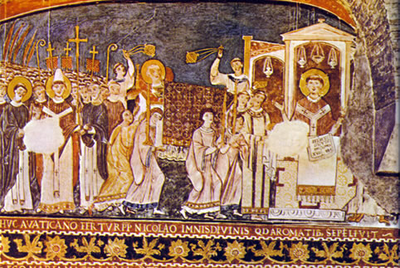




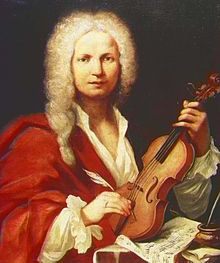




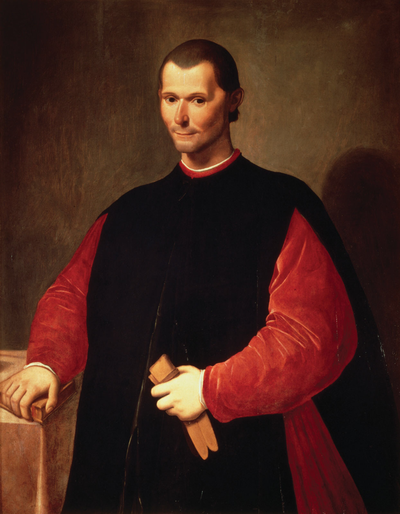





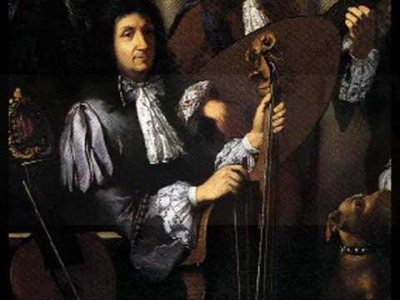








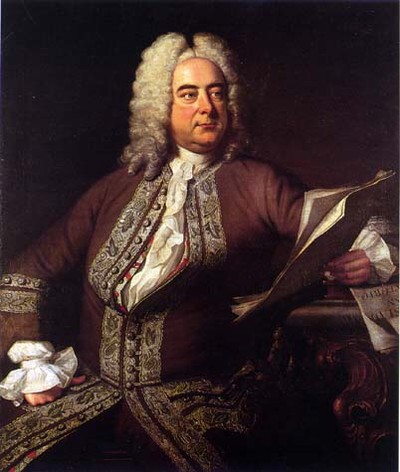
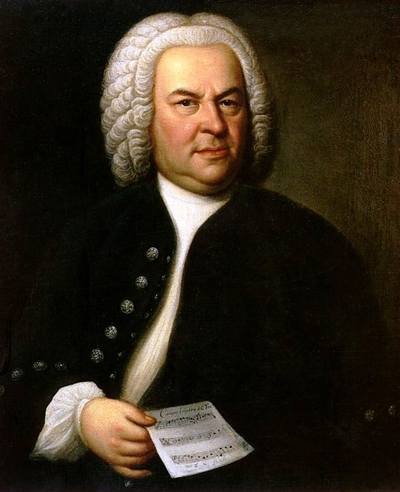

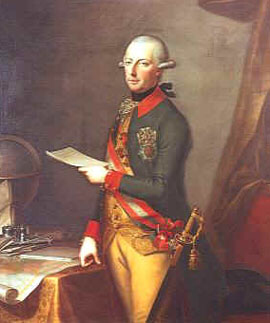




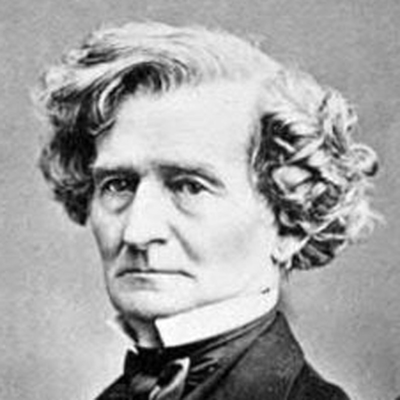
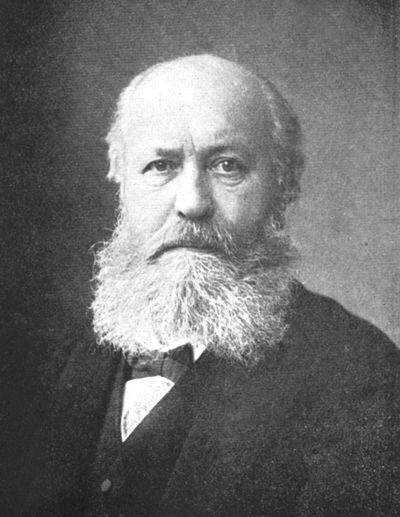

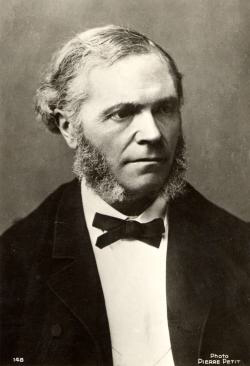
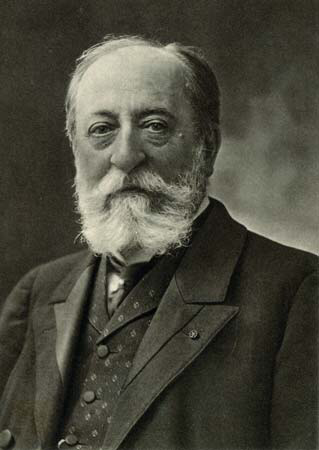
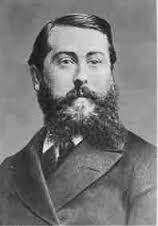
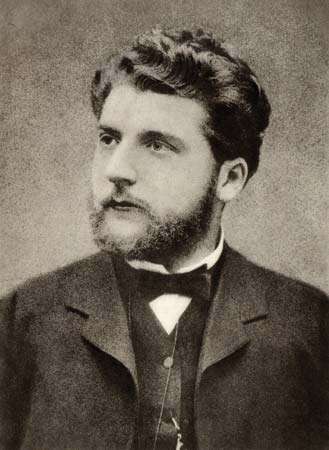
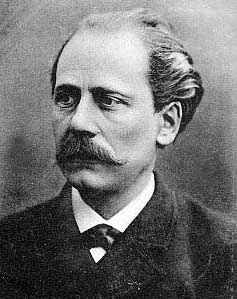
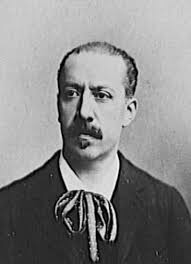
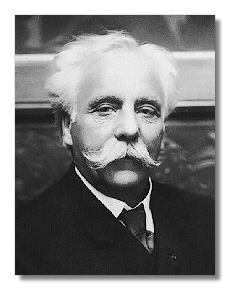
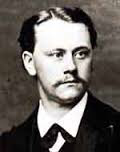
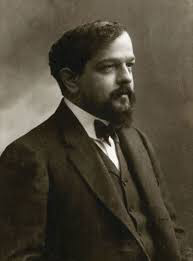

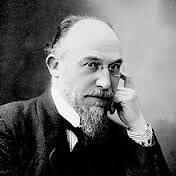

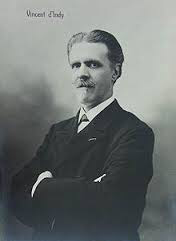
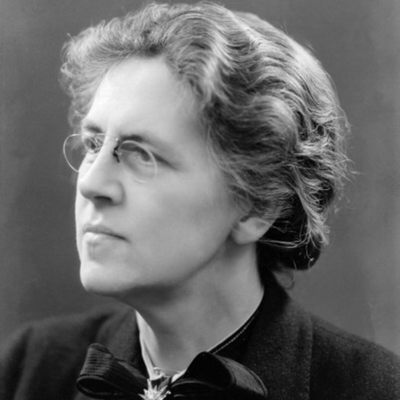
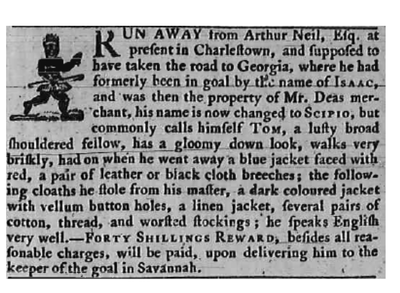

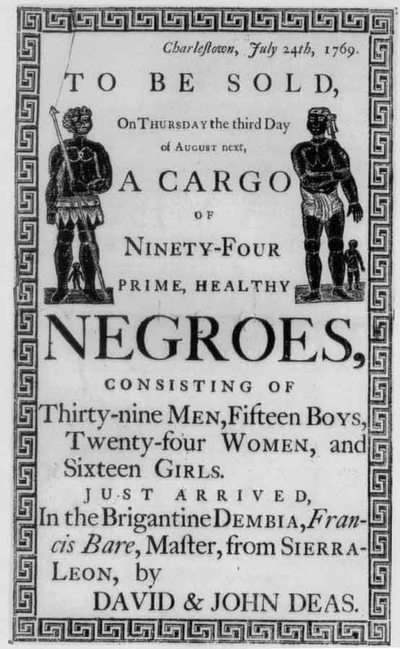
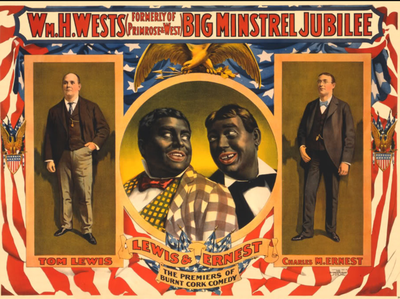
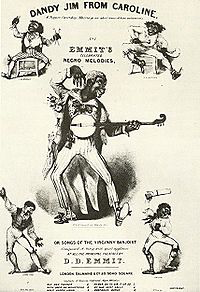


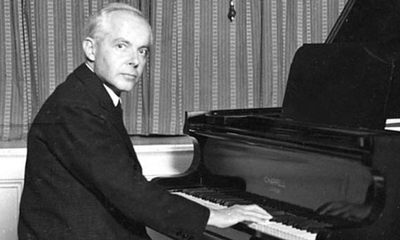

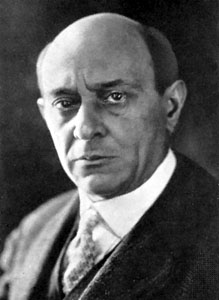






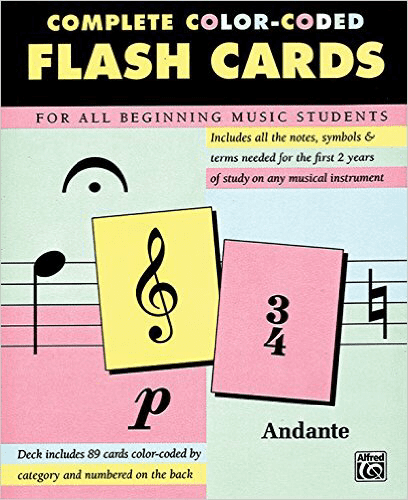
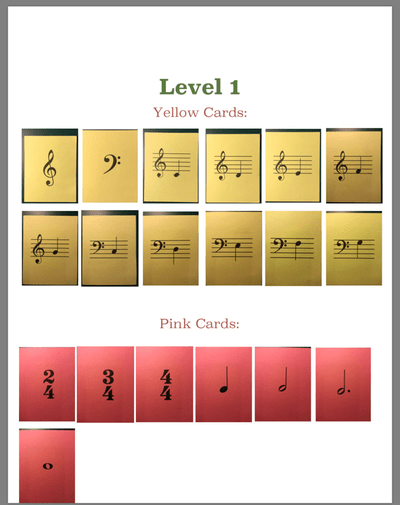
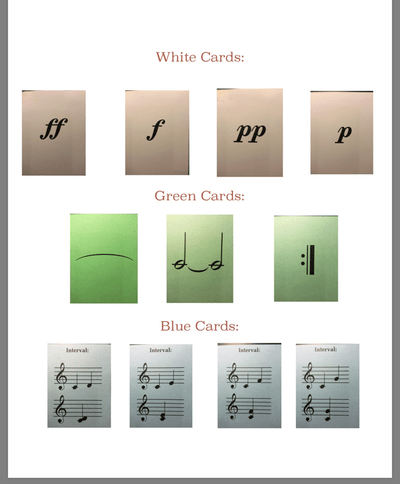
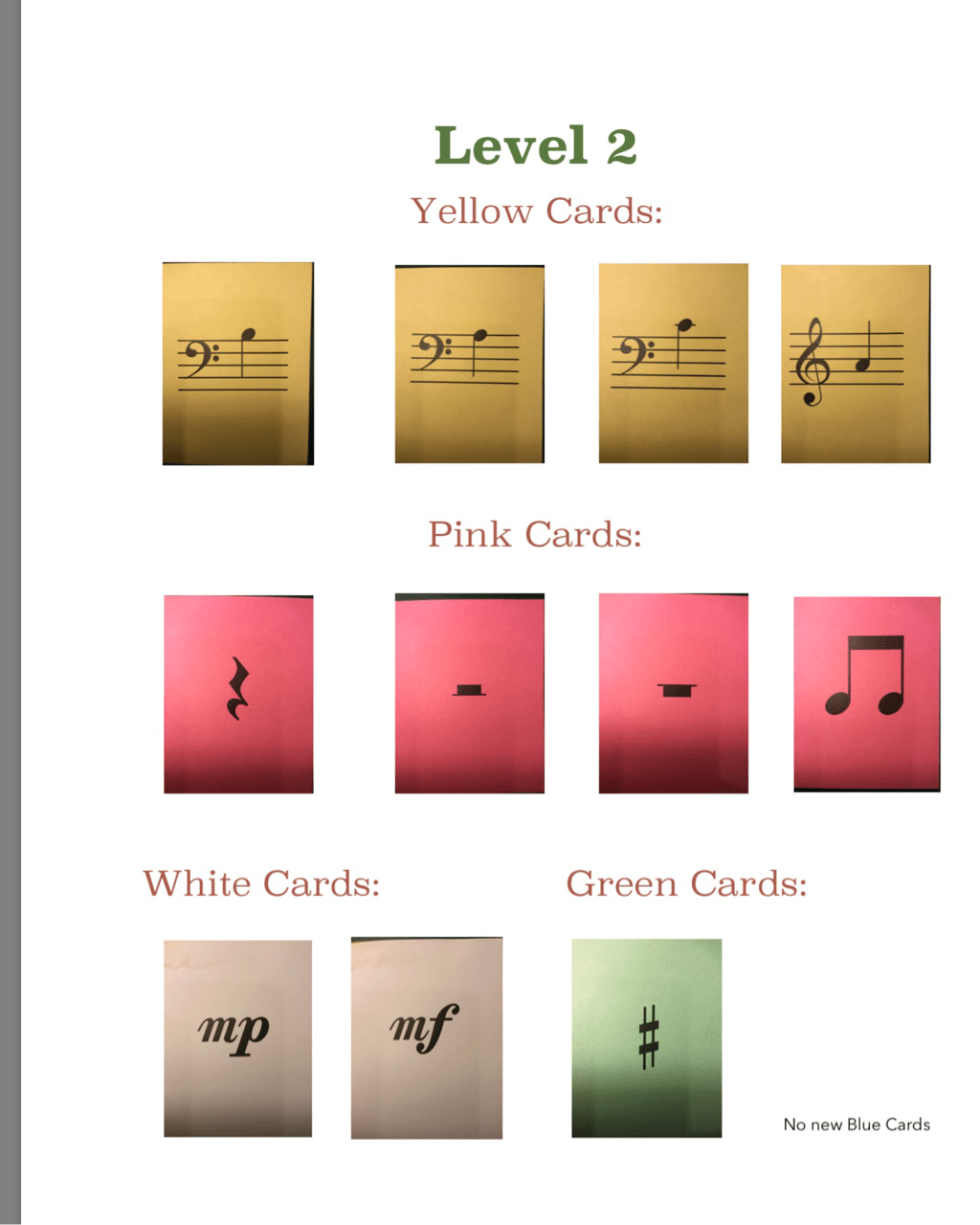
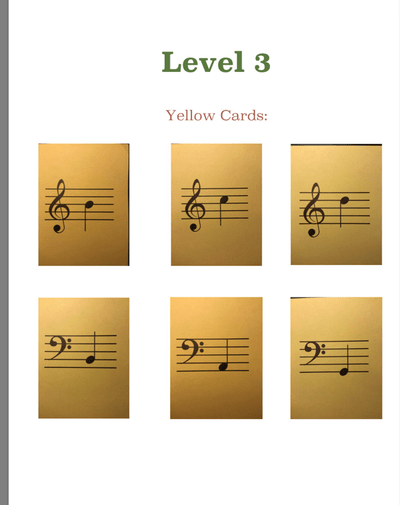
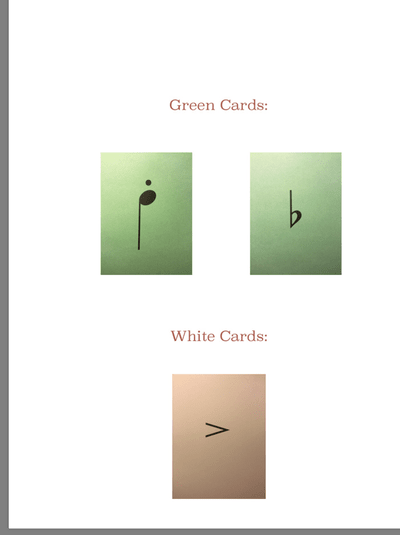
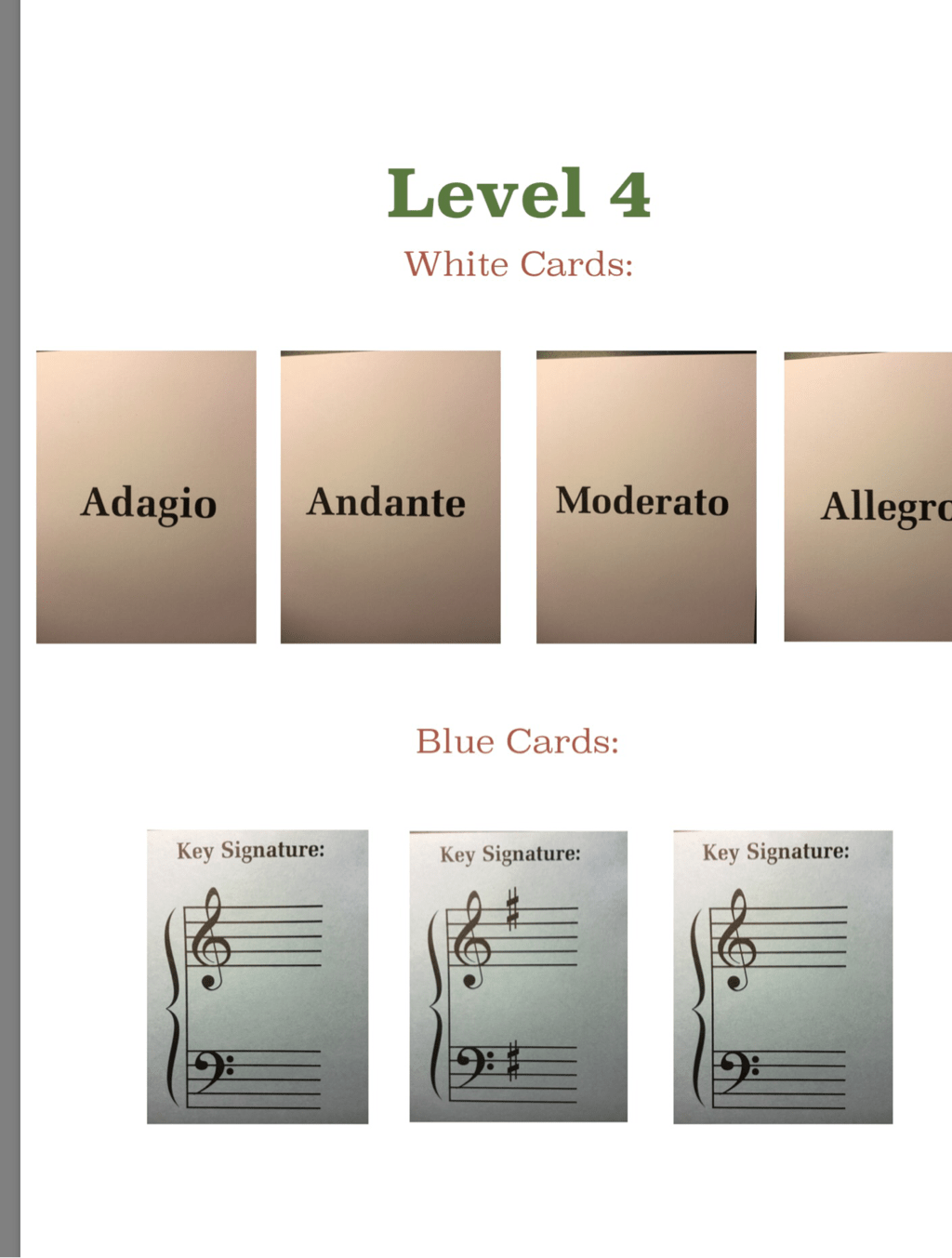
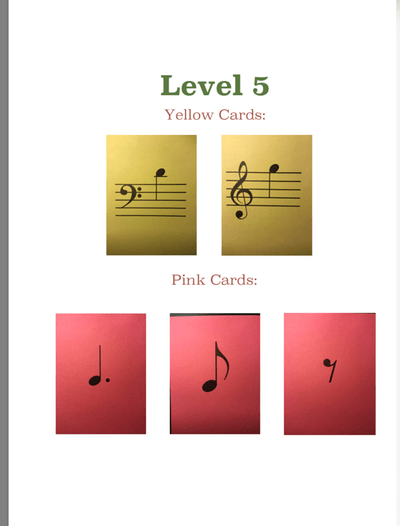
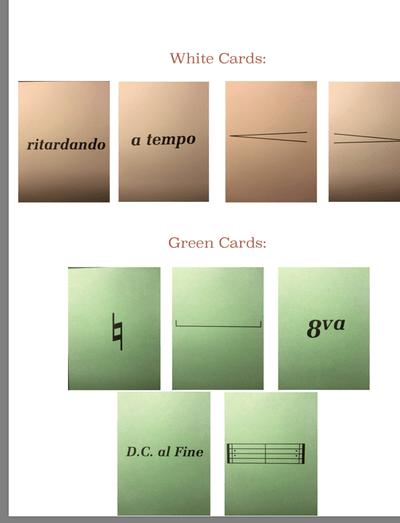
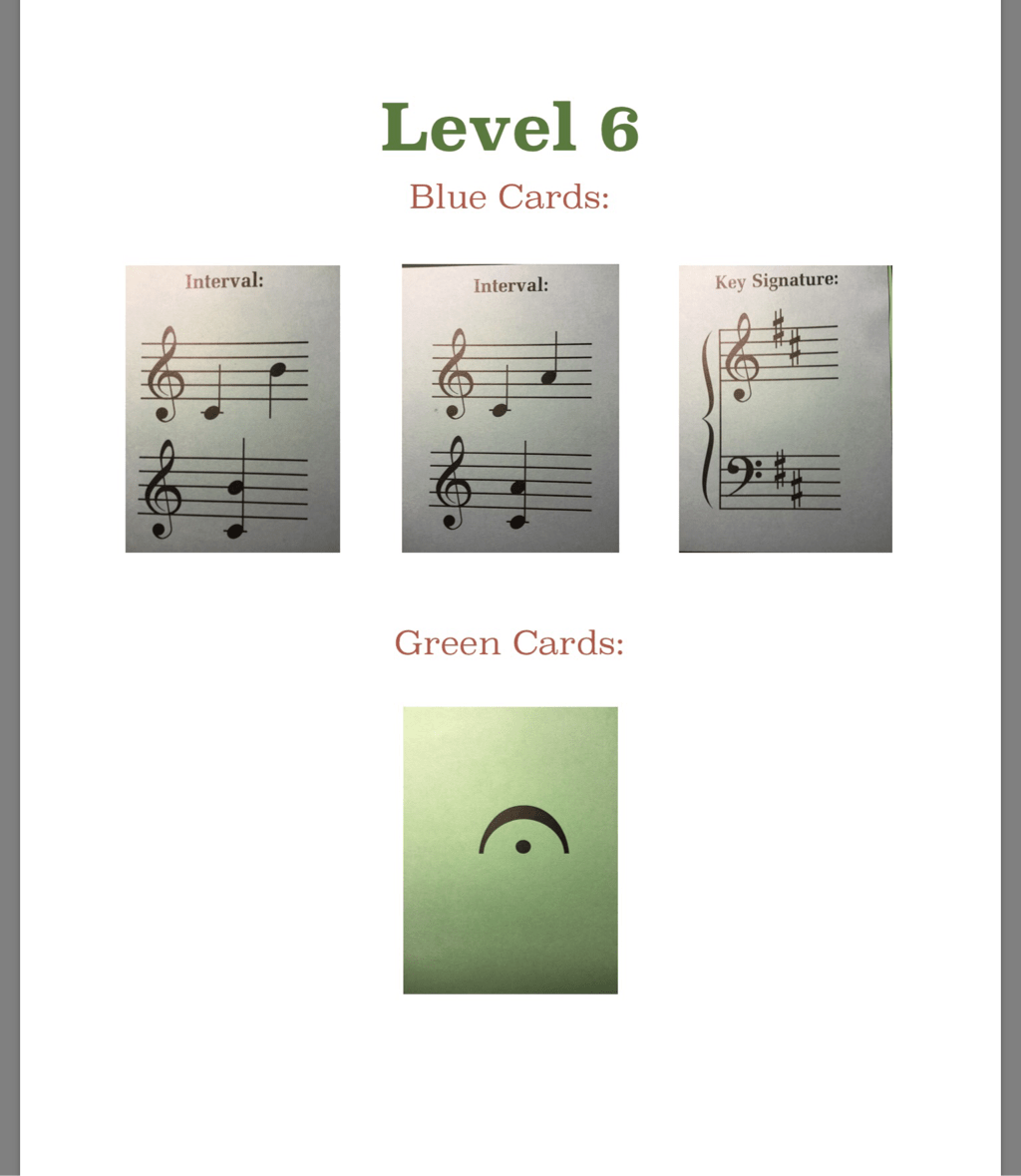
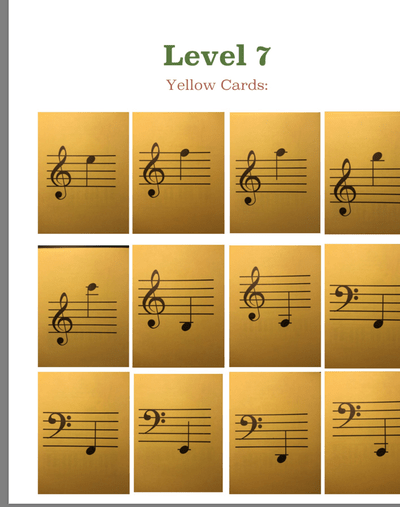
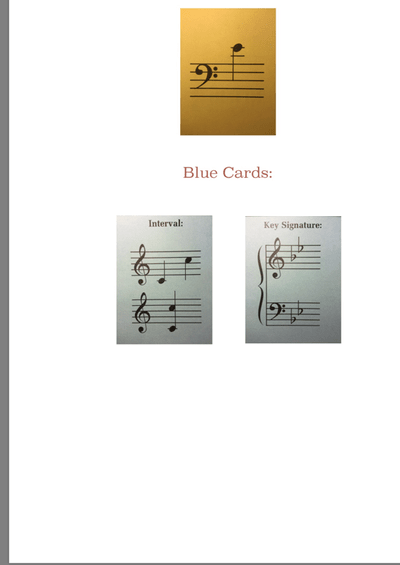

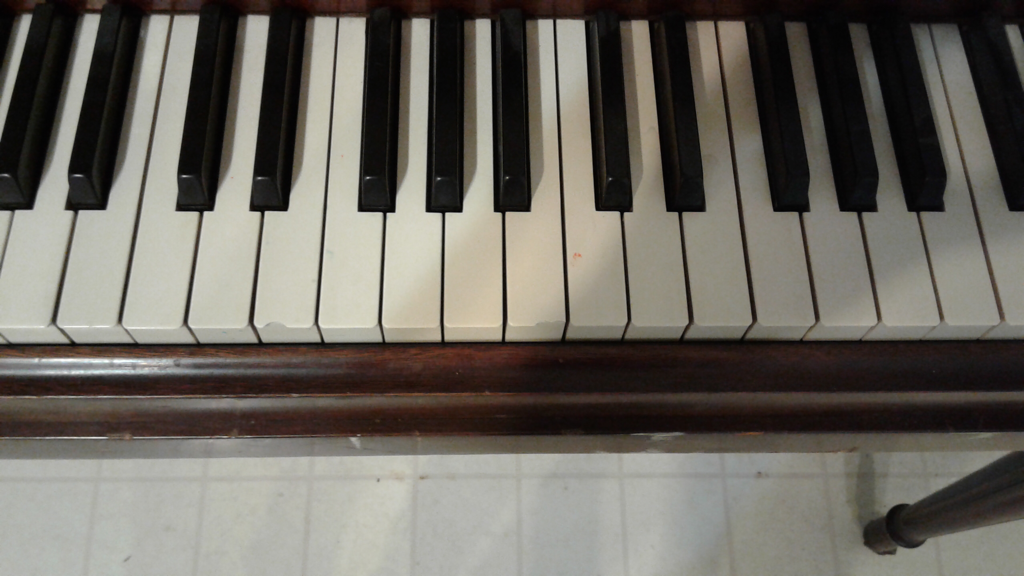
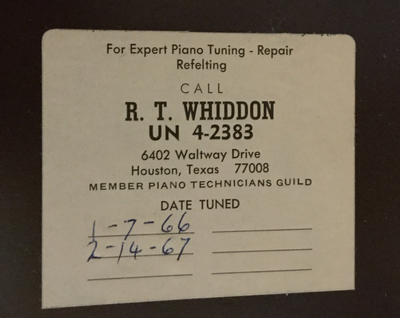
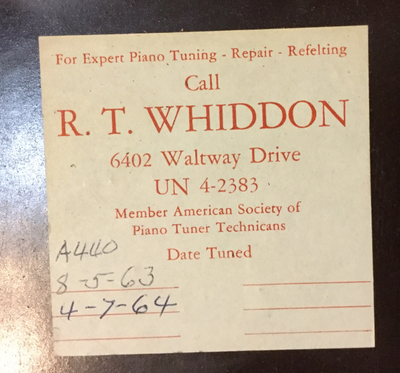



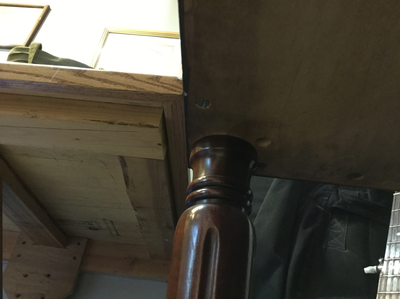
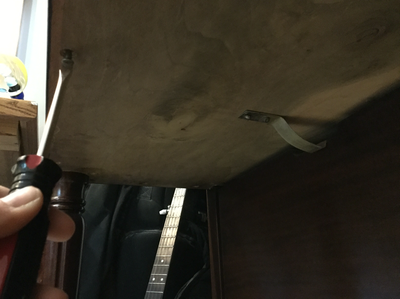
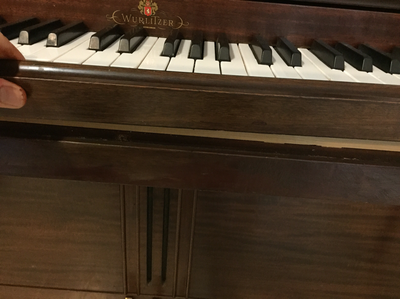
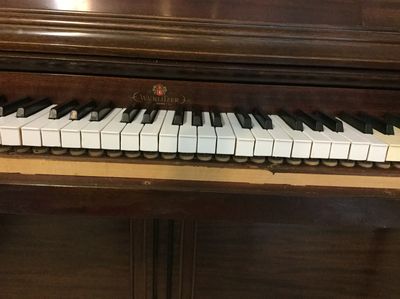
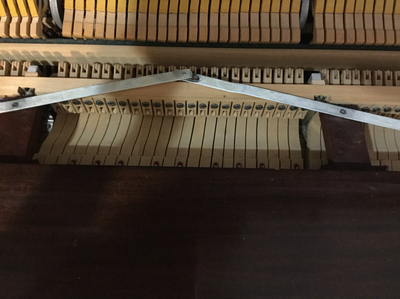
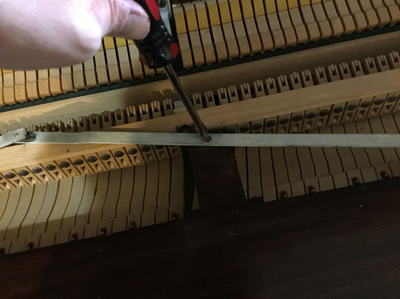
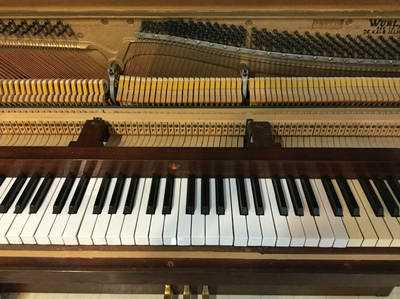
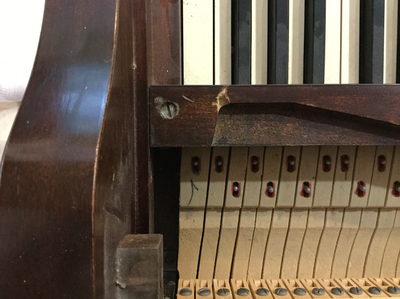
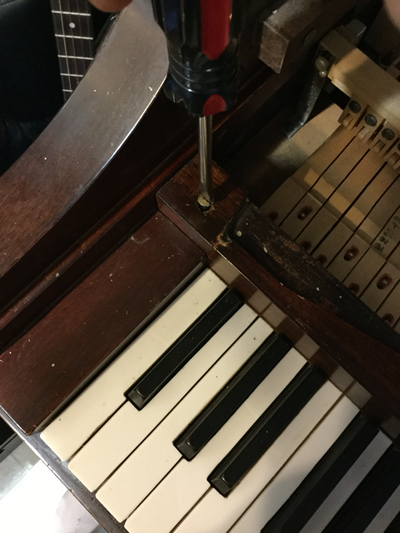
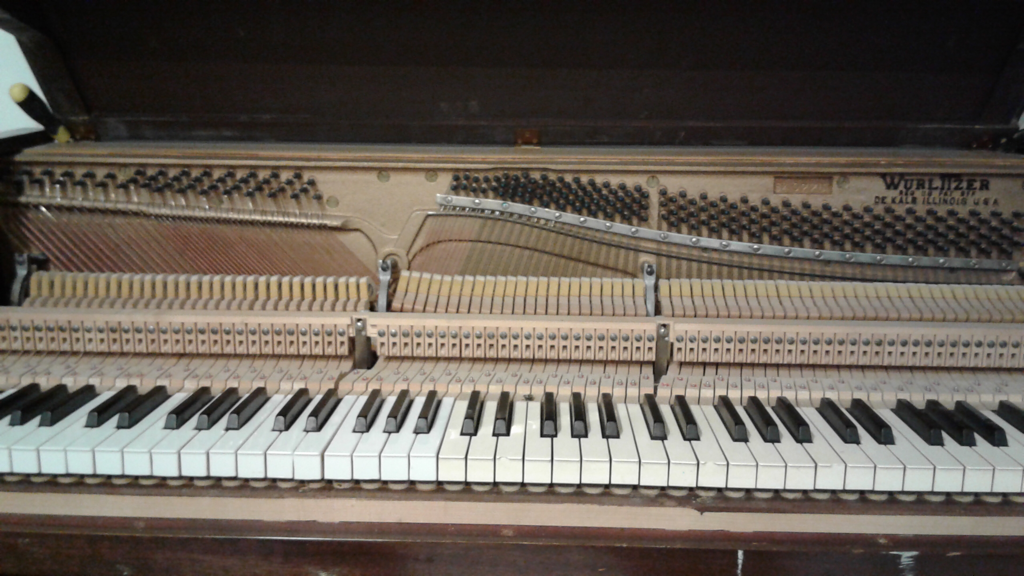
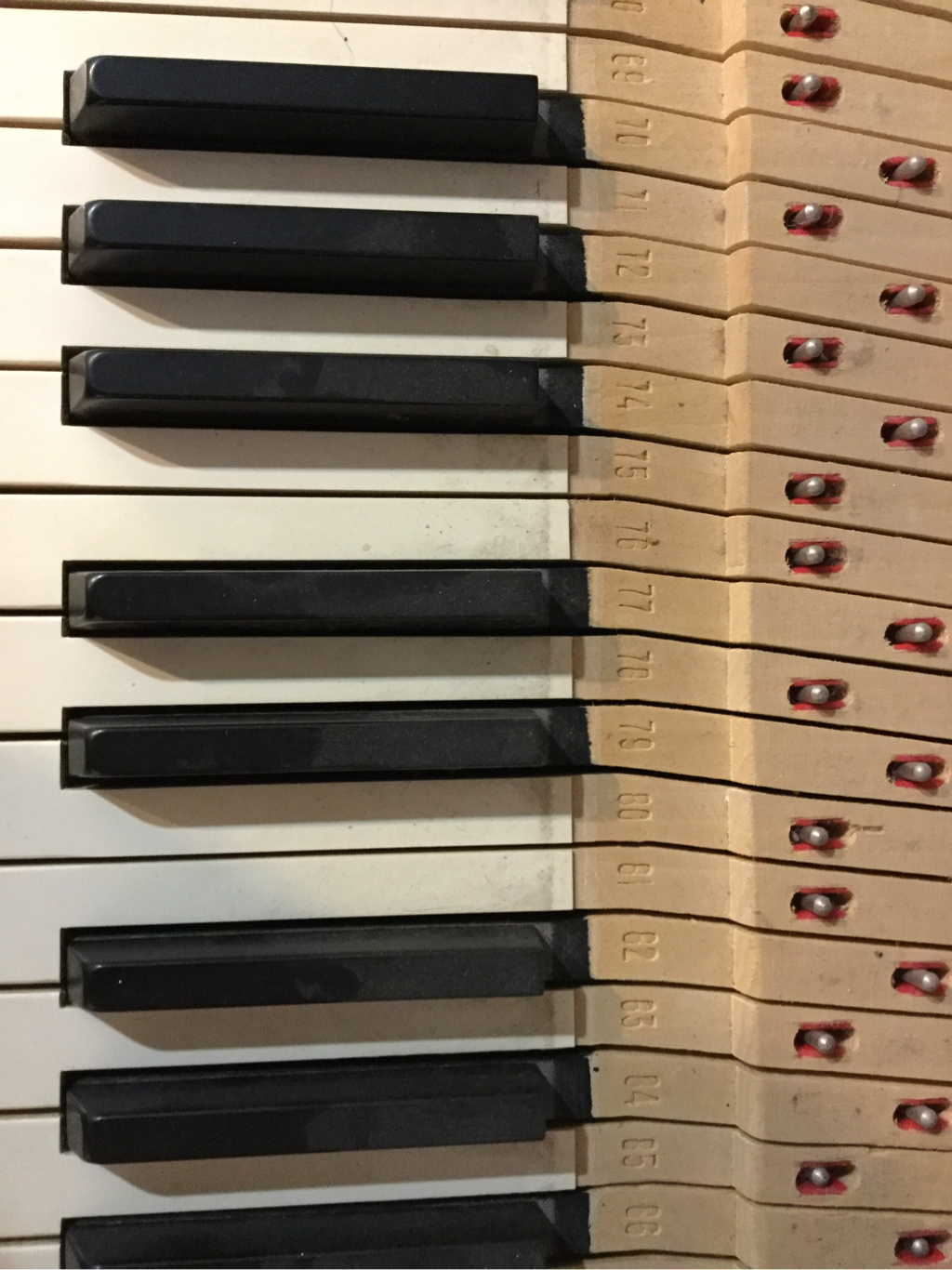
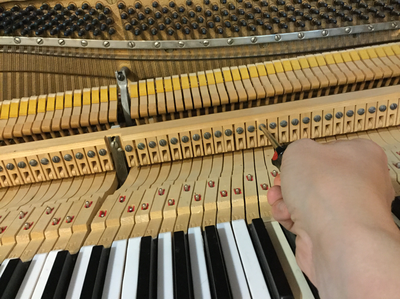
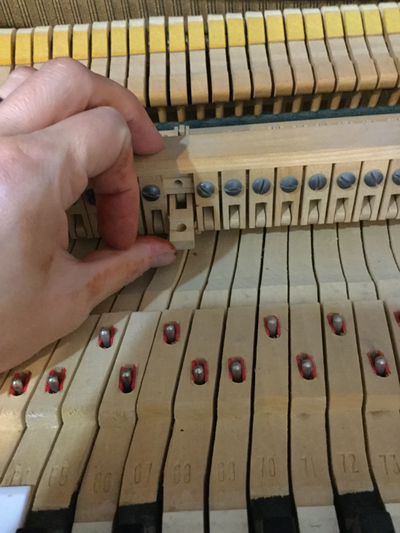
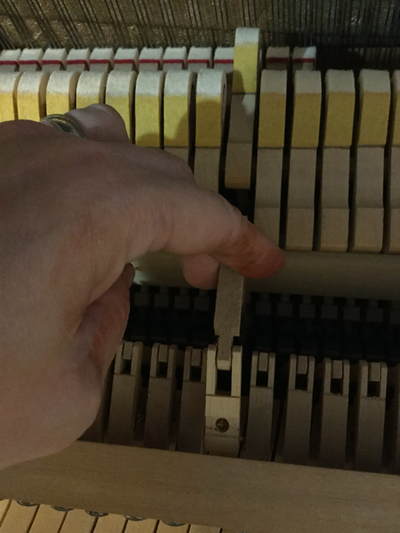
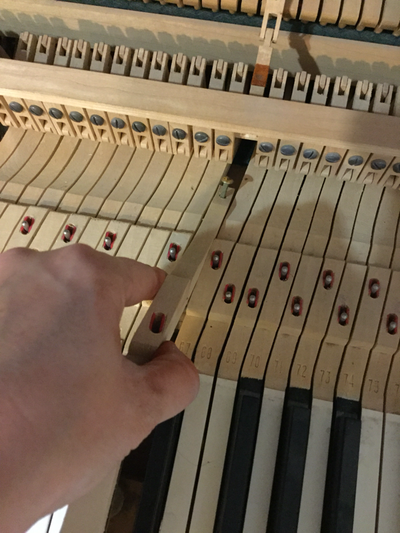


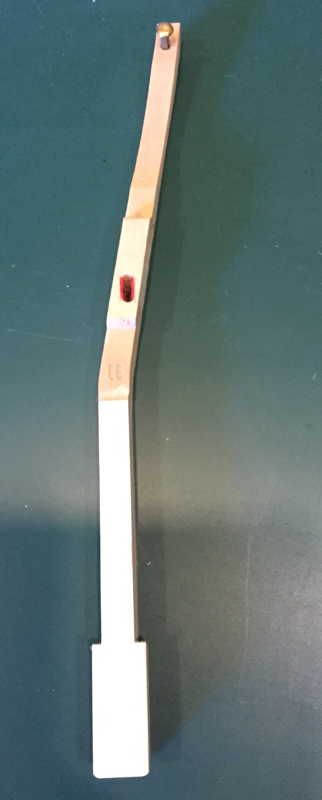
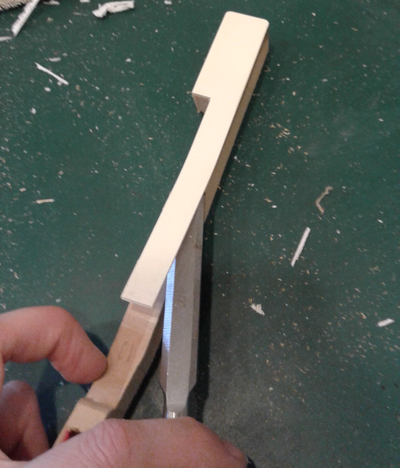
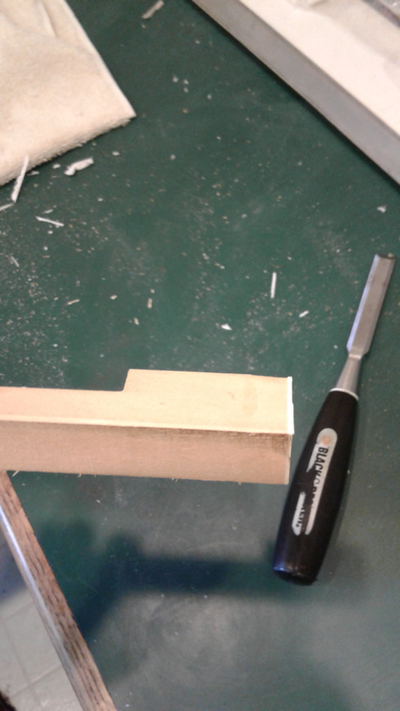
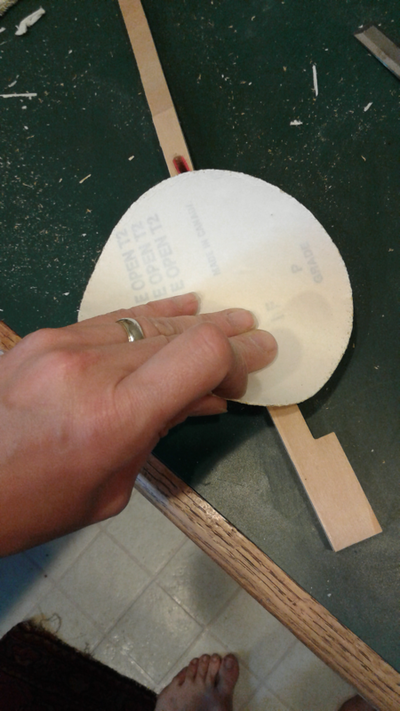
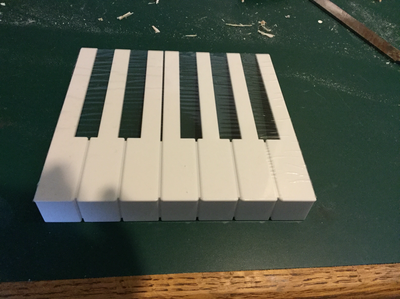
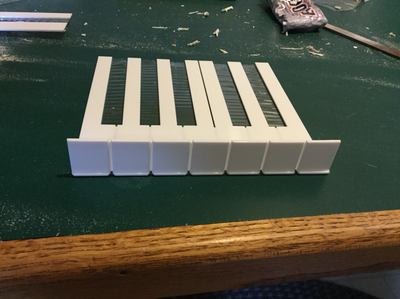
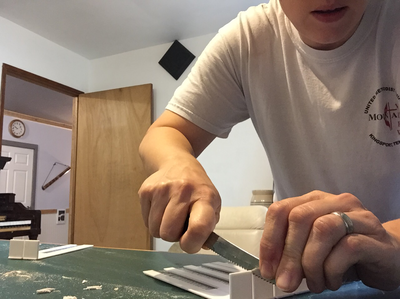
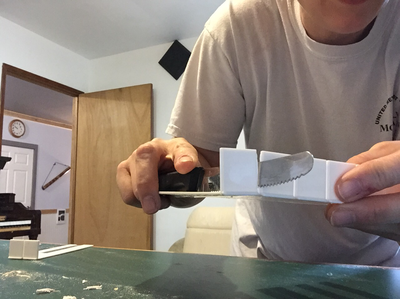

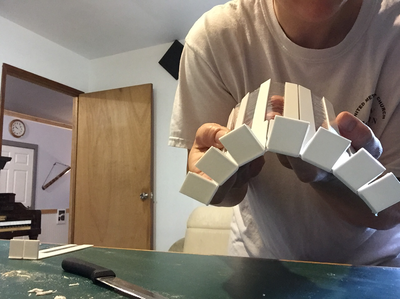
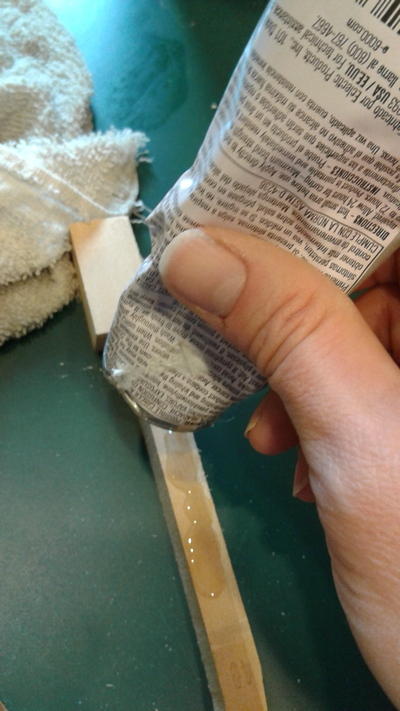
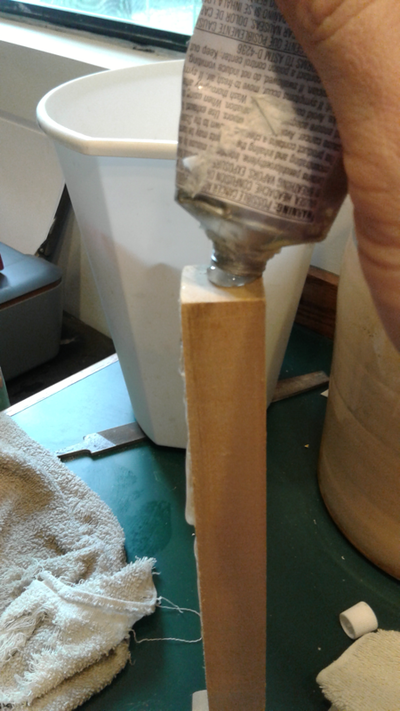
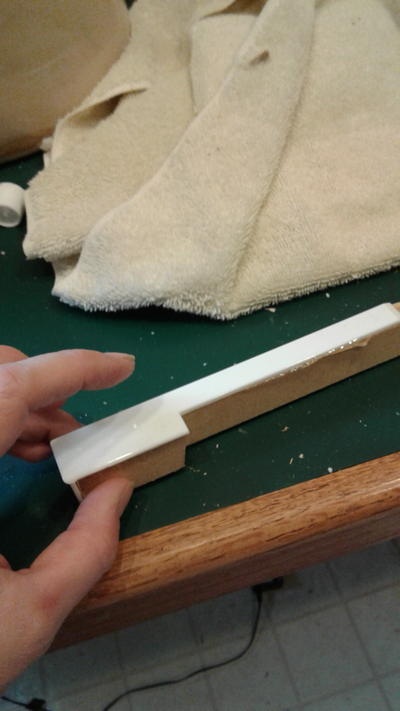
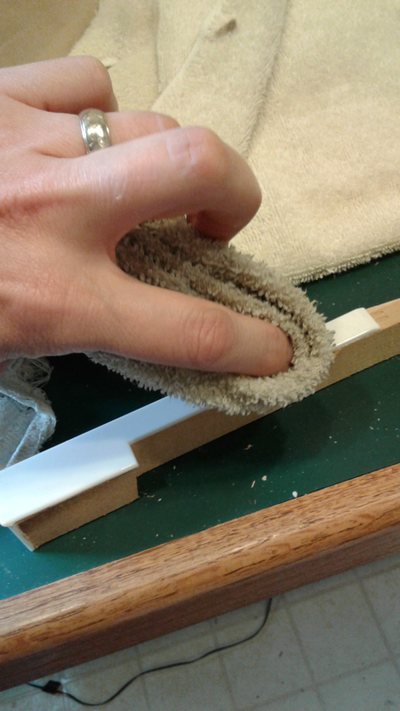
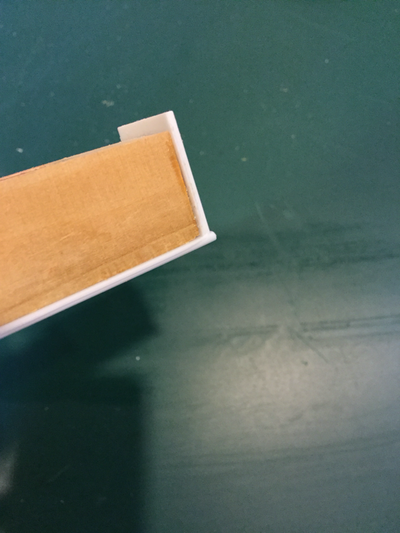
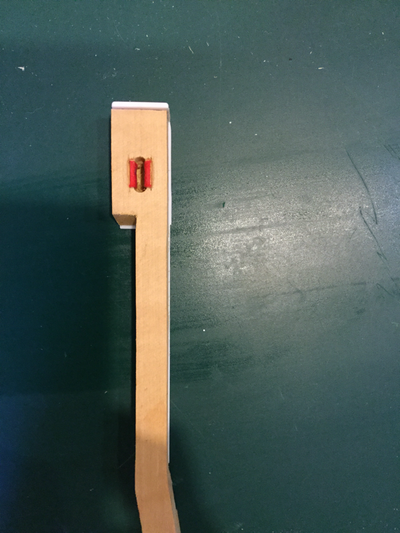
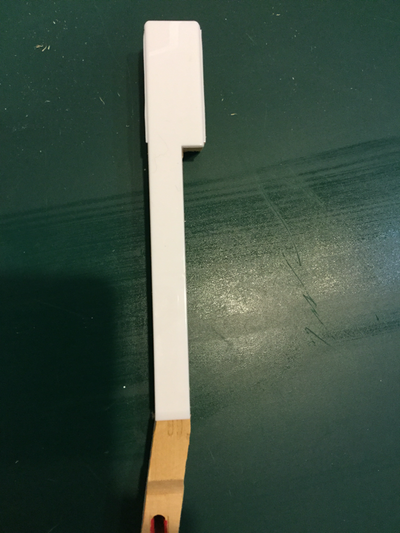

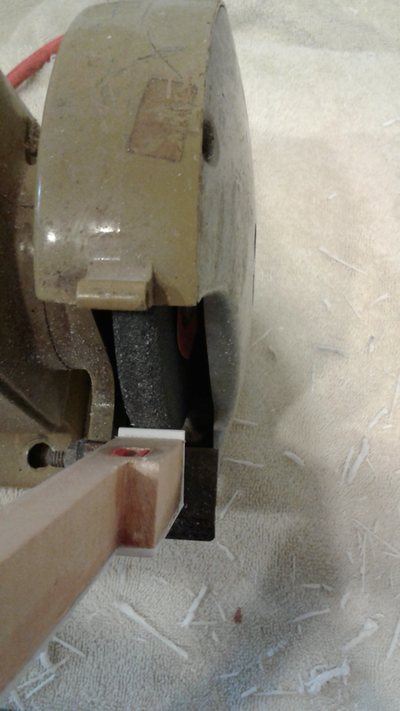
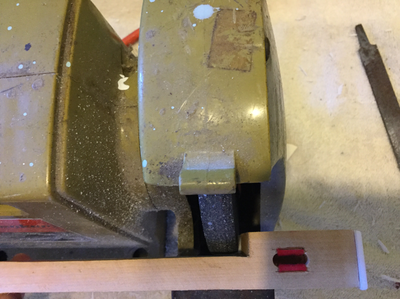
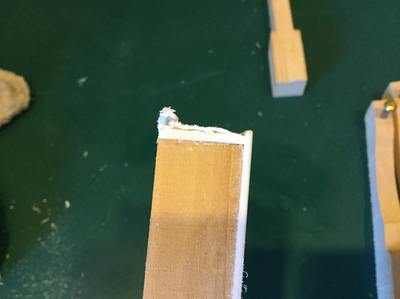
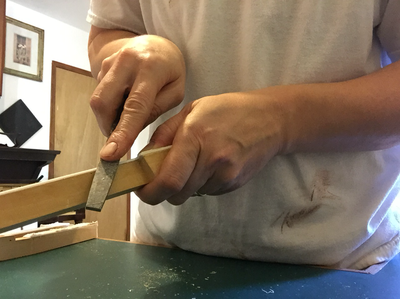
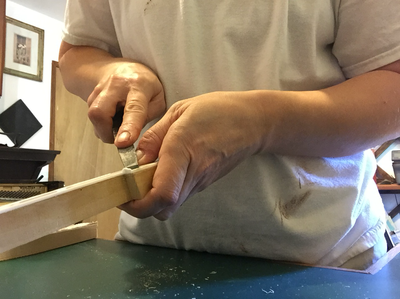
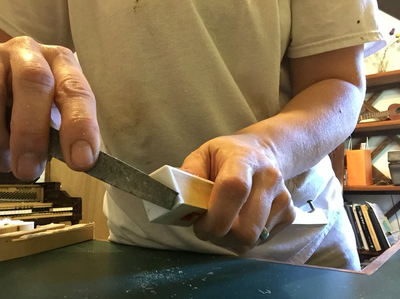
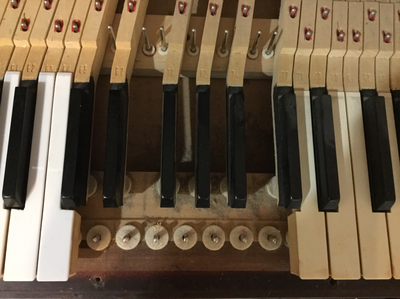
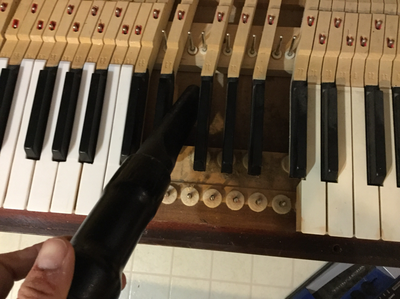
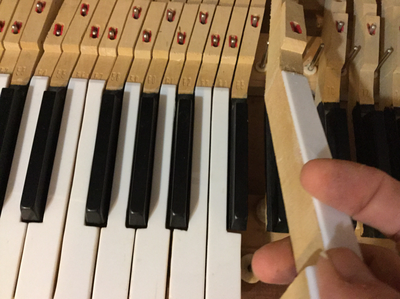
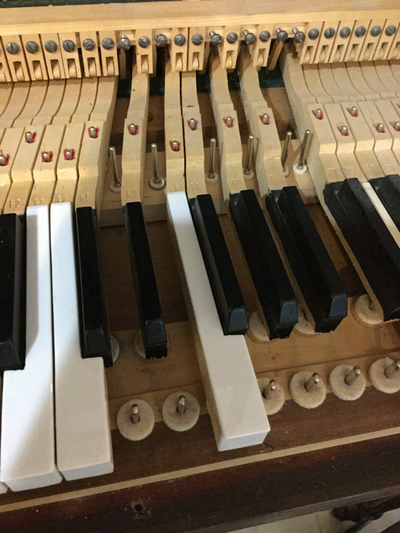
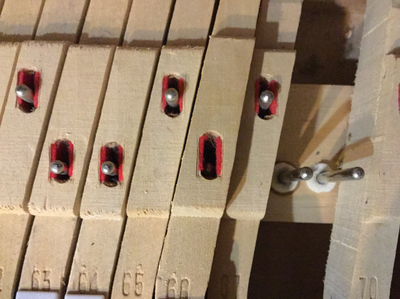
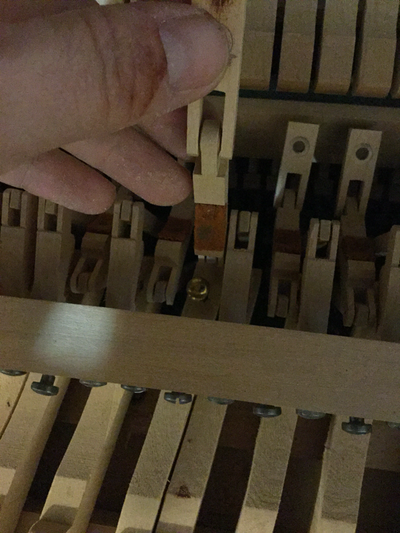
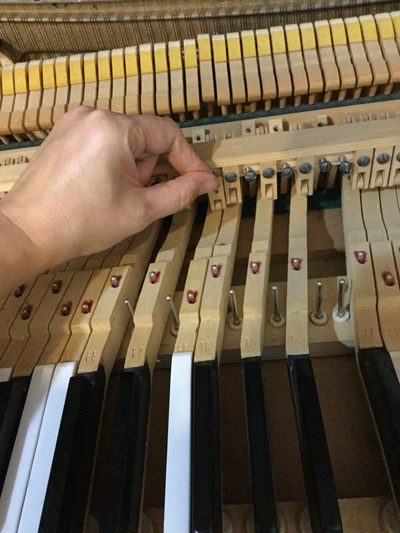
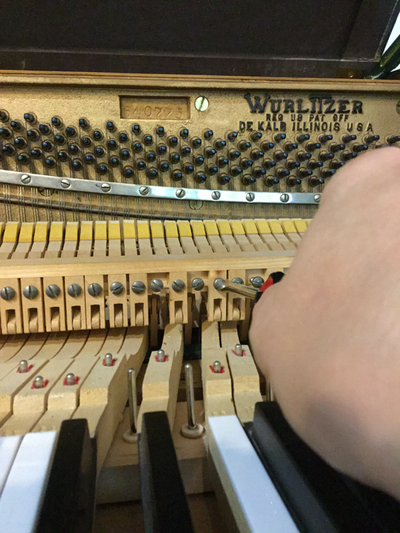
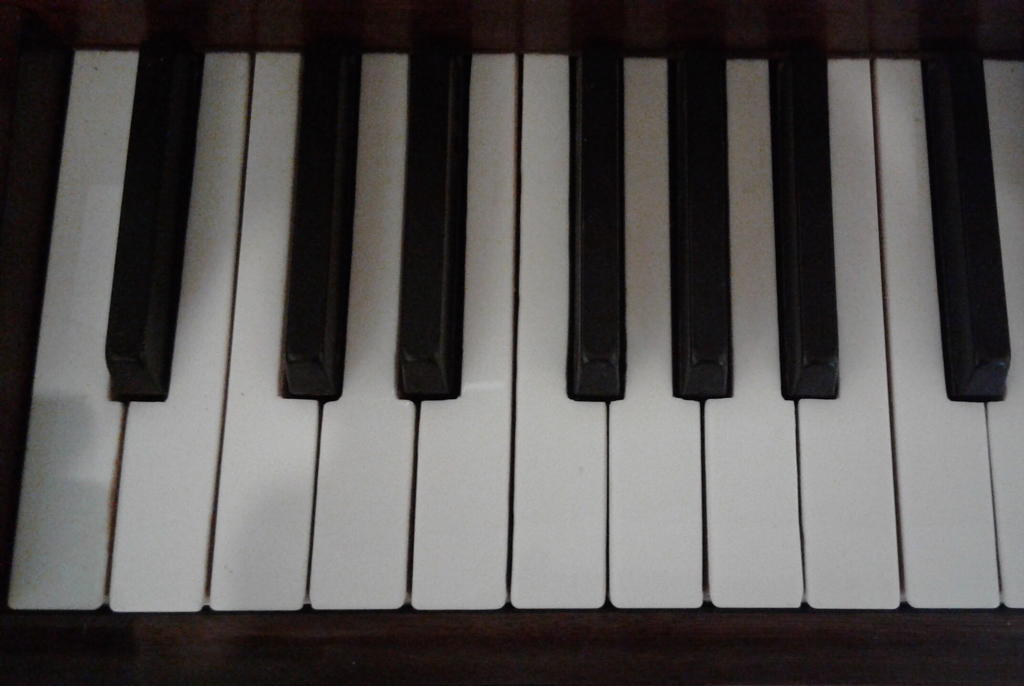
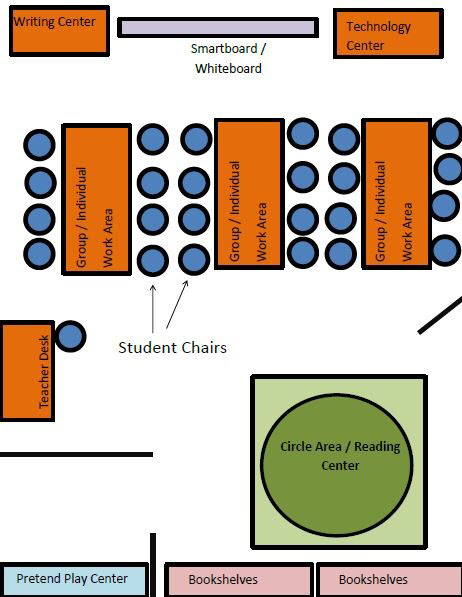
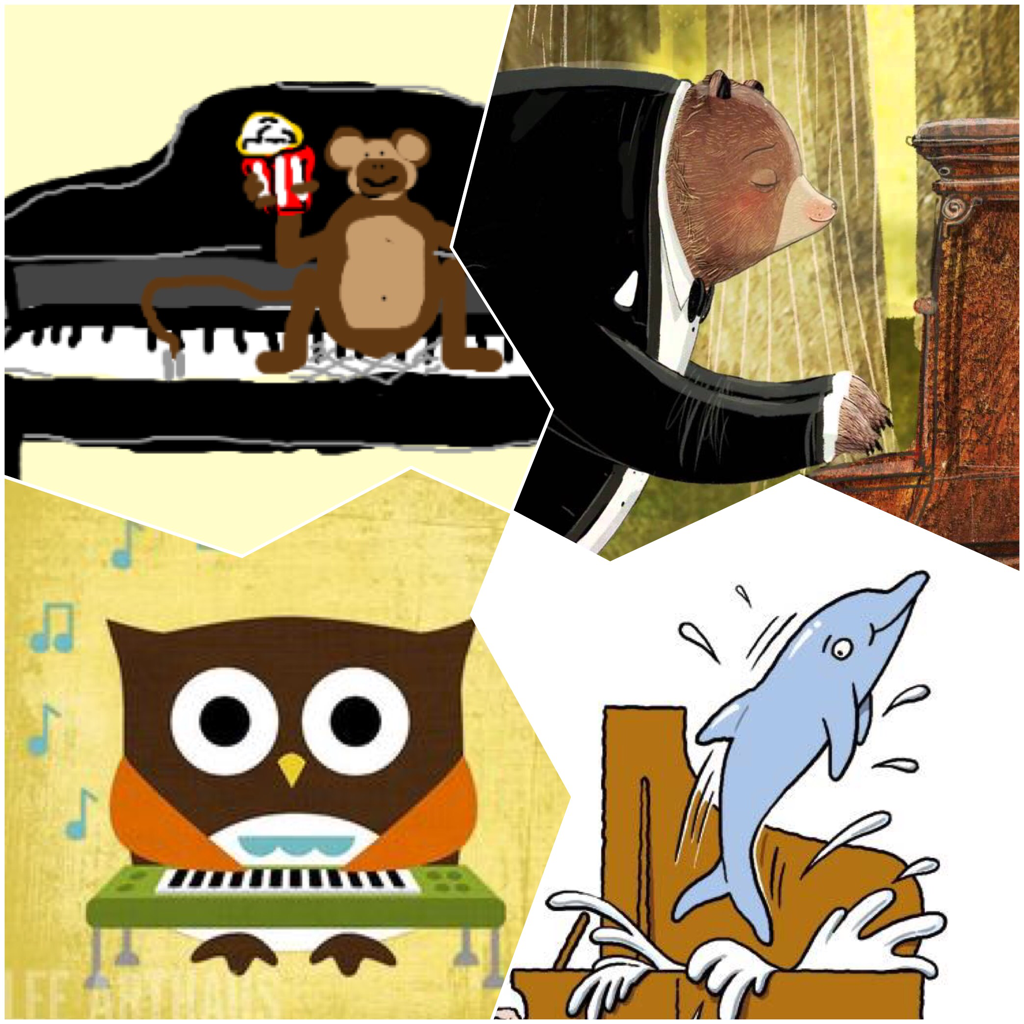
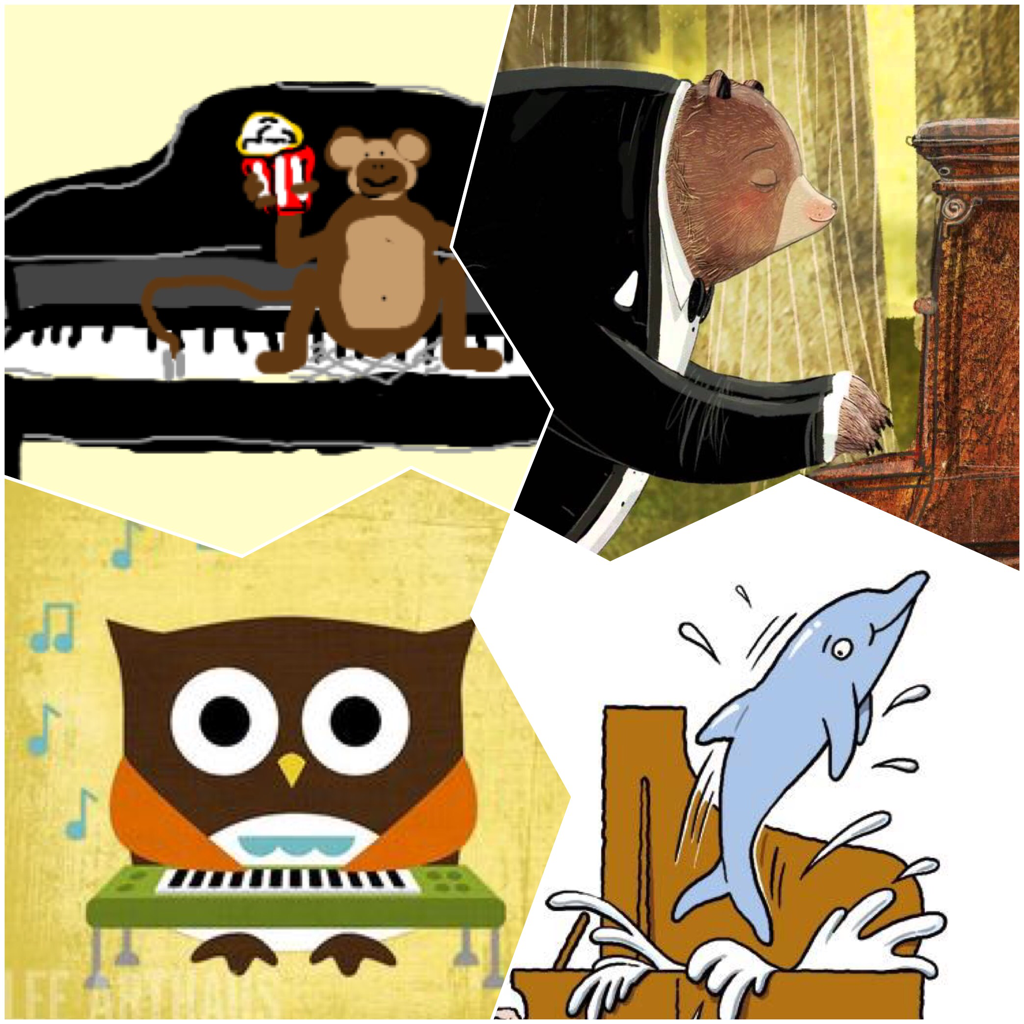




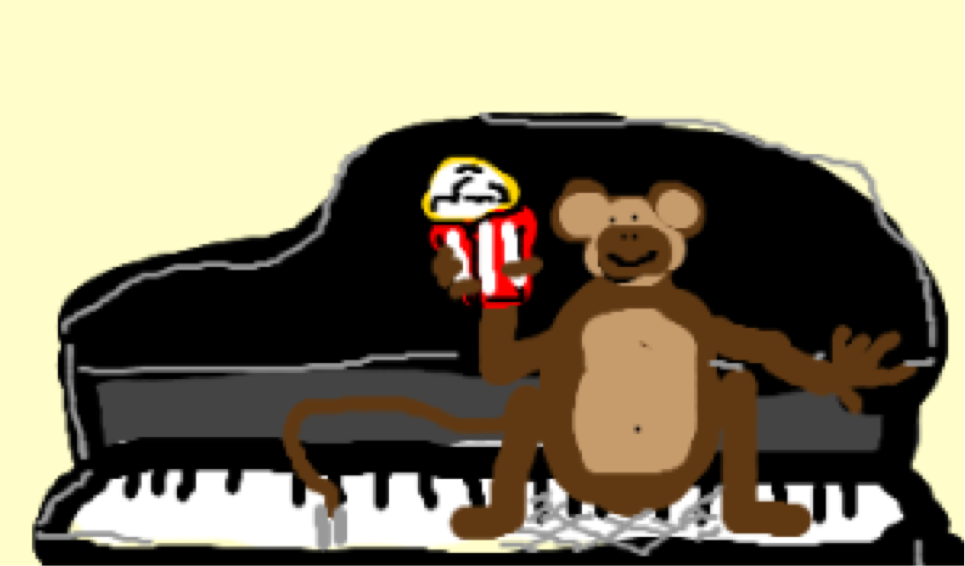
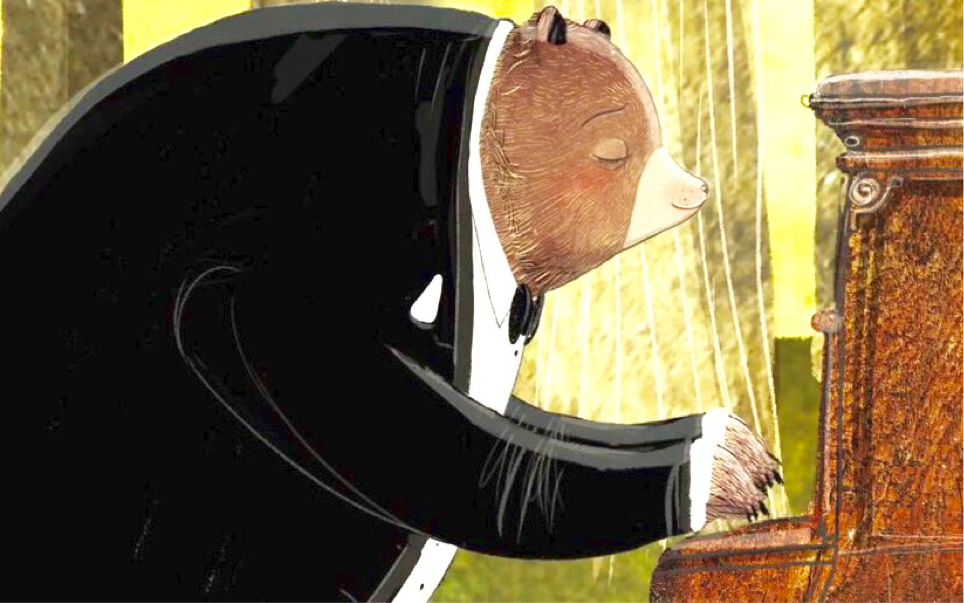
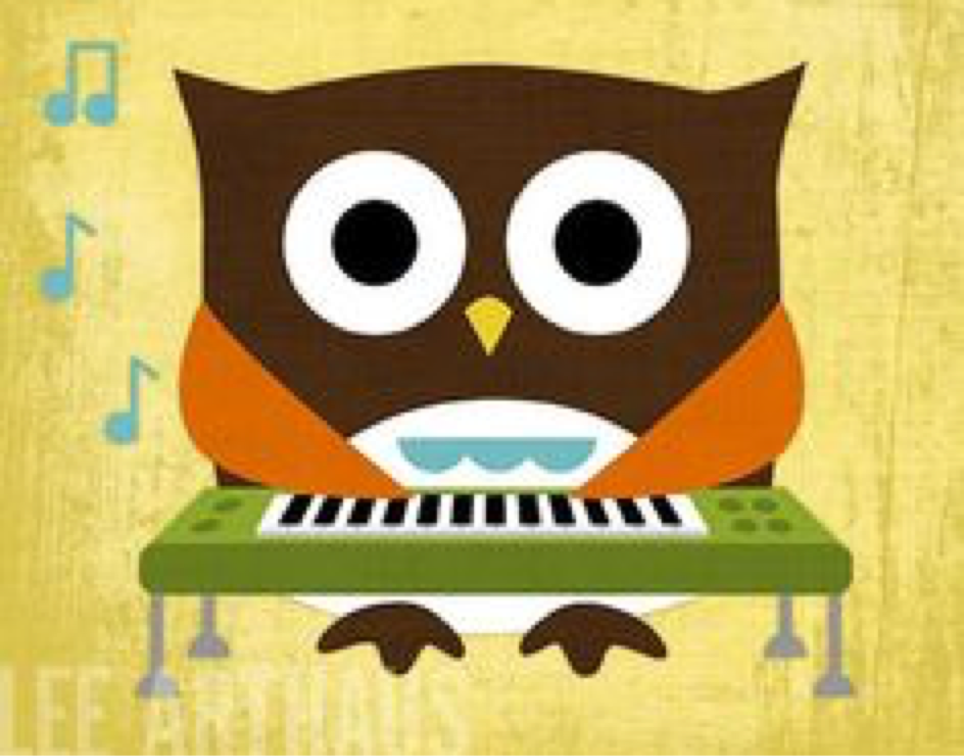

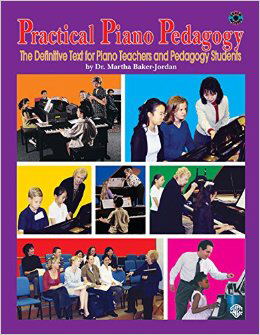


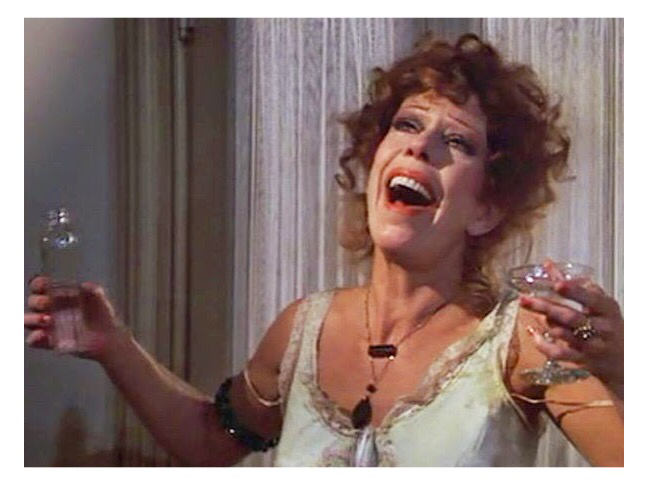
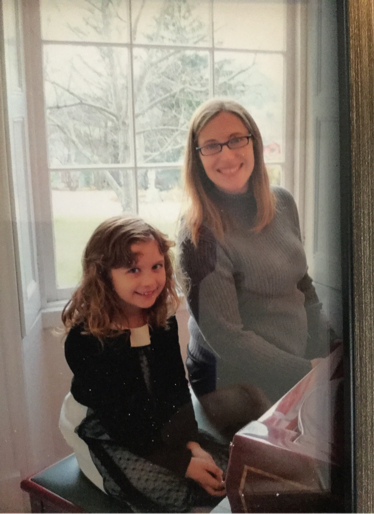




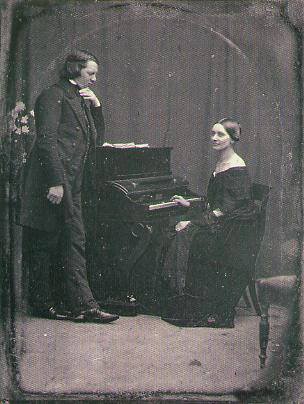
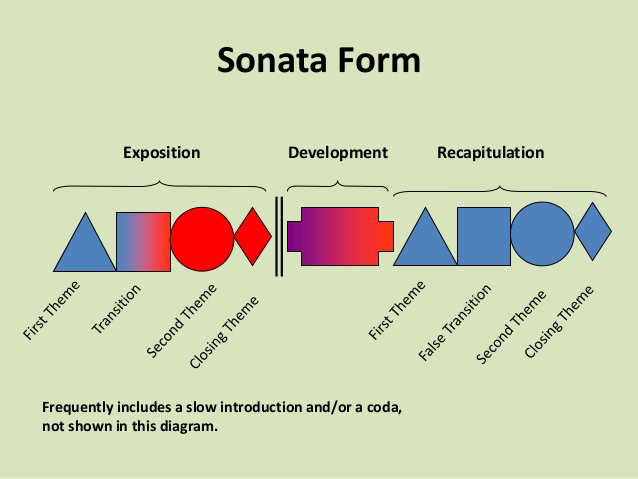
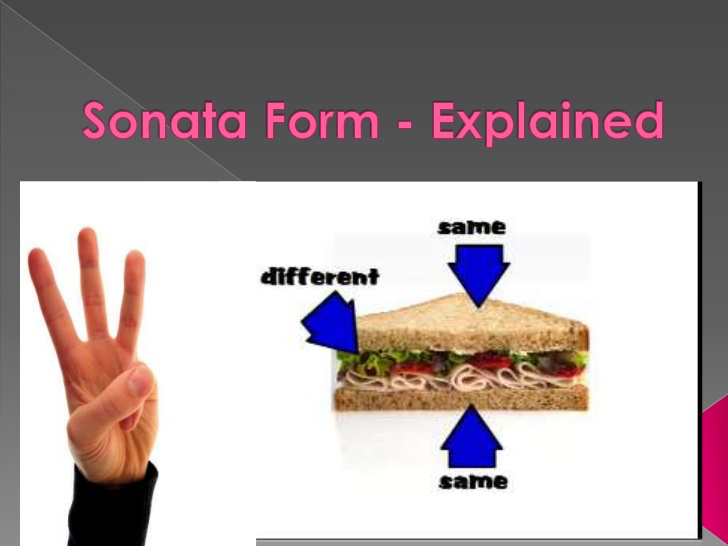
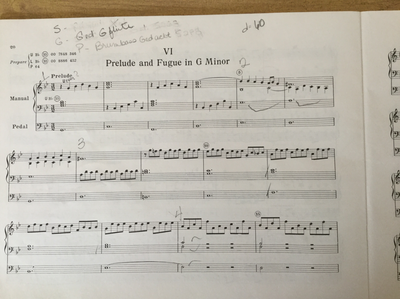
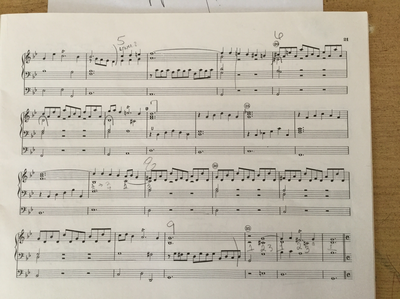
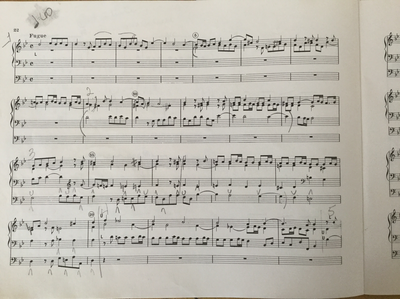
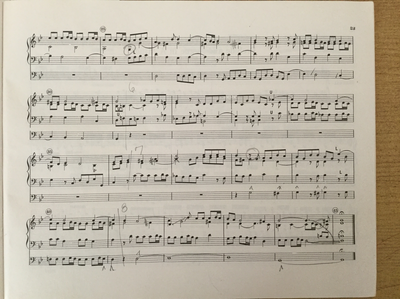
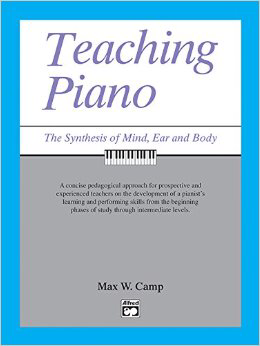

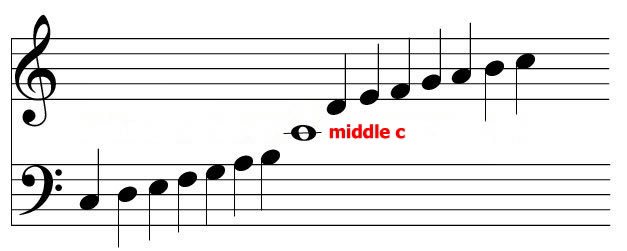
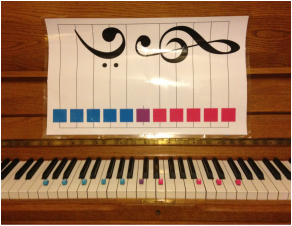
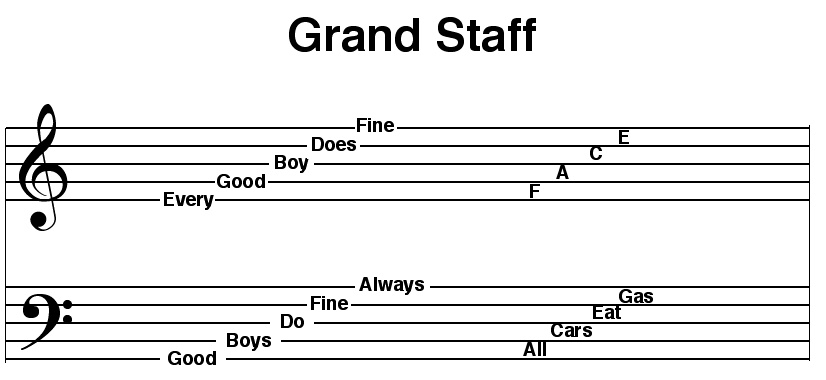
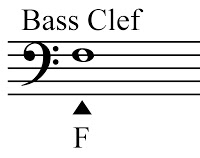
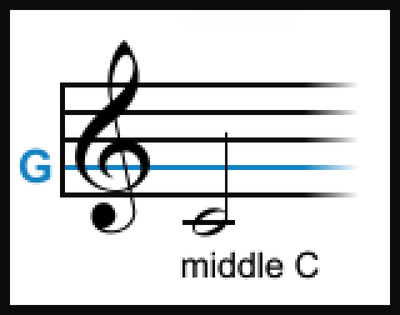
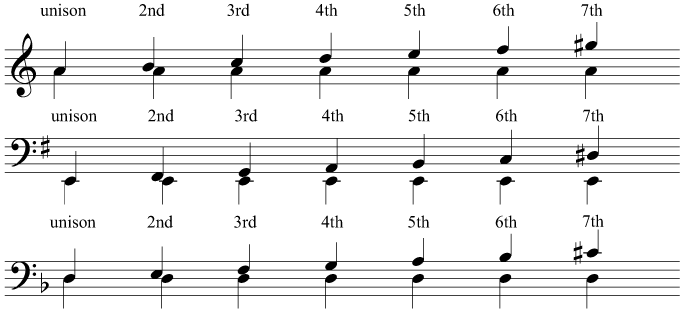
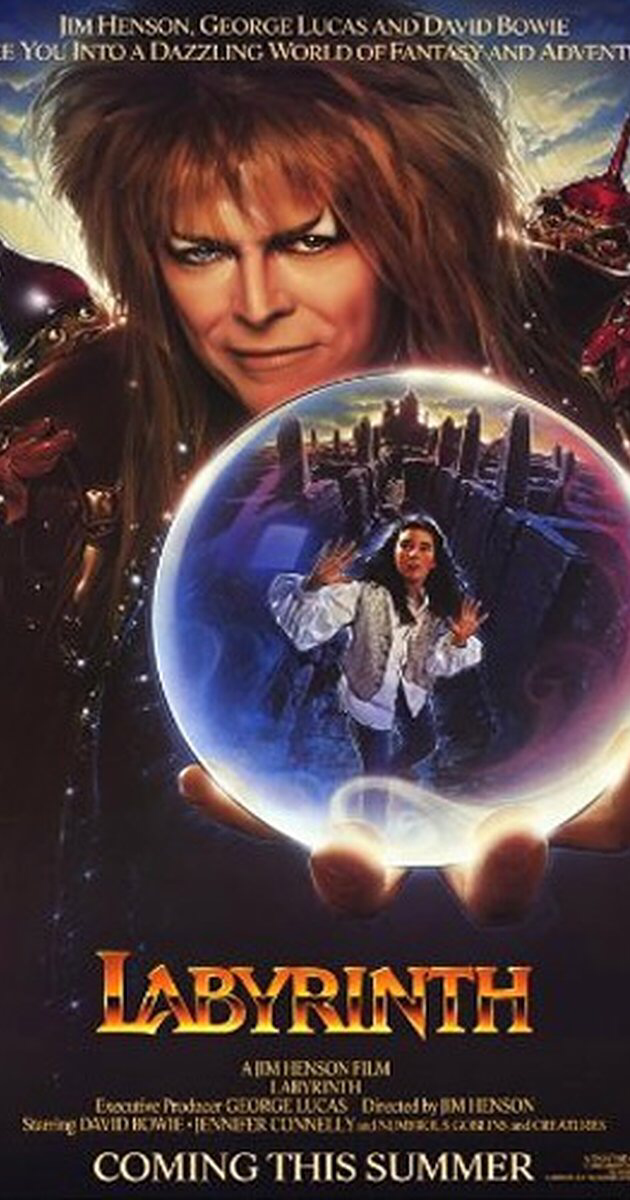
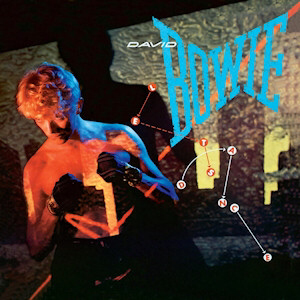




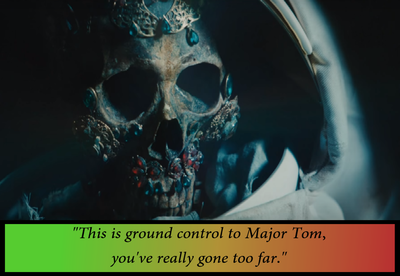

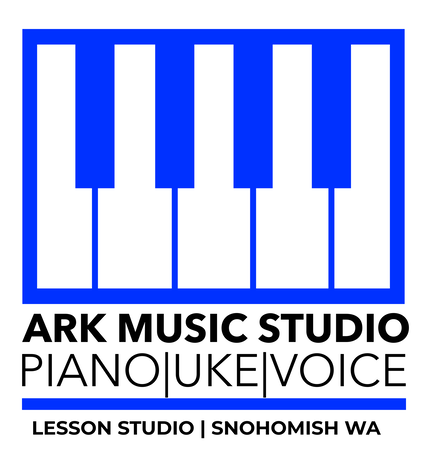

 RSS Feed
RSS Feed
